
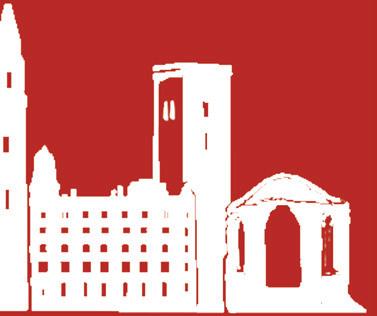



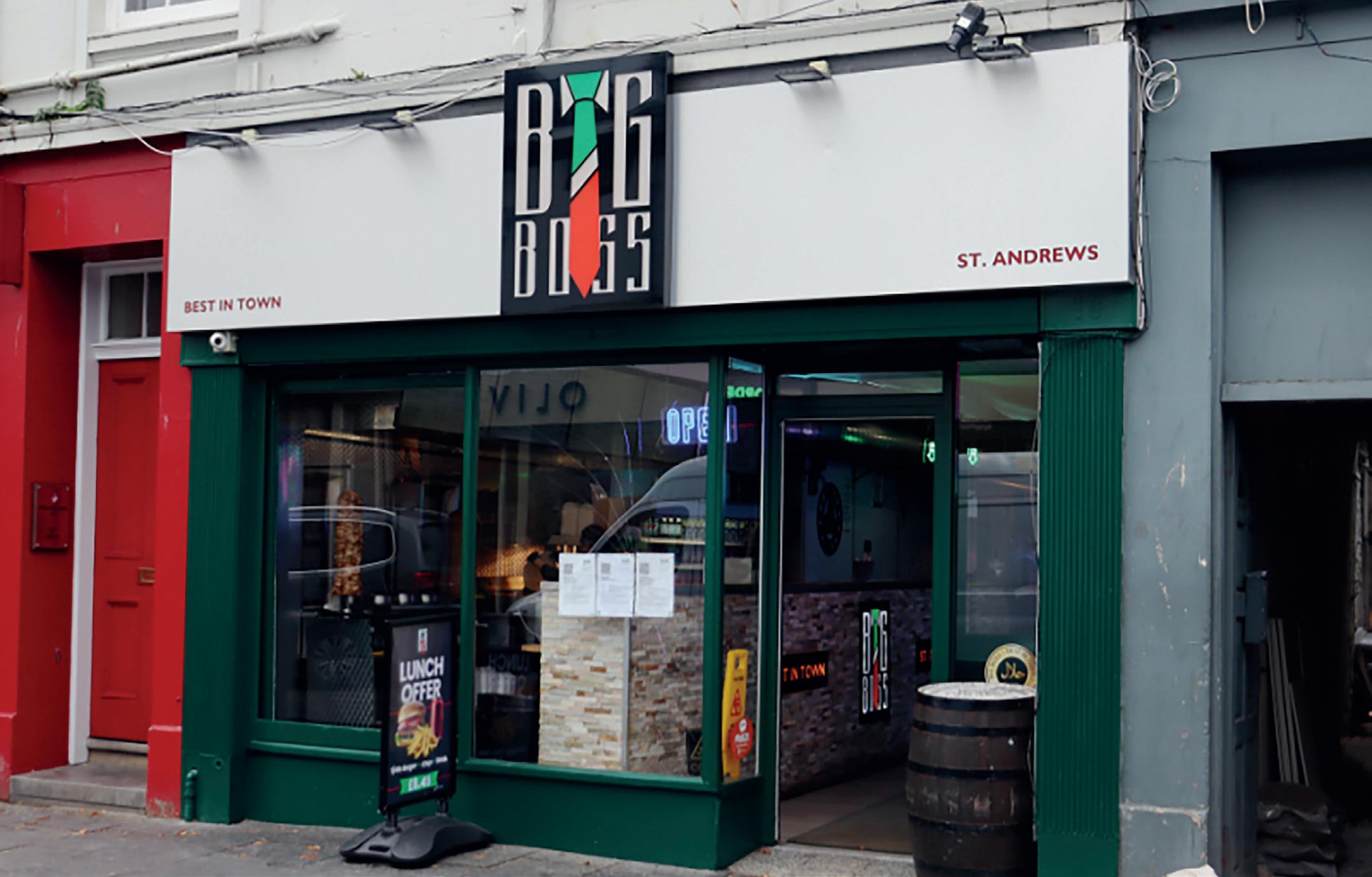
young women and girls.
Former kebab shop Big Boss and ice cream shop Little Boss owner Ugur ‘Jack’ Emre was convicted on 14 October 2024 by the Dundee Sheriff Court for “sexual assault of a minor, making non-consensual sexual remarks, supplying children with alcohol, licensing offences, and forcing young staff to work during a restricted time,” according to an article from The Courier, published 16 October 2024. Despite these convictions, Emre has not been sentenced to prison, raising concerns among the St Andrews community about safety, especially for
The Big Boss business encountered its first public scandal on 27 October 2024 when police entered the takeaway and temporarily closed it, charging Emre with breaching licensing legislation. Emre also had a previous domestic offence conviction.
That same month, posts began circulating on St Andrews Facebook pages and groups concerning sexual harassment allegations against Emre. A post from the student page ‘St Fessdrews’ from 18 October 2024 states, “Everyone who hasn’t seen the sexual harassment allegations about Big Boss ... look them up.”
A reply to the post shared
the circulating information, including alleged testimonies from two underage female employees, one accusing him of sexual assault, the other of overworking and verbally attacking his employees. As these posts gained local traction, the police became involved.
Emre’s 14 October Court sentencing has shocked the community due to the verdict of no prison time. During sentencing, Sheriff Gregor Murray stated, “I arrive at the conclusion a robust communitybased package of sentences would be sufficient to punish [Emre] and to deter others.”
Instead, Emre has been sentenced to perform 250 hours of unpaid labour, pay £5,000
in compensating fines, comply with a restriction of liberty order preventing him from leaving his home between 9am and 9pm, observe five-year nonharassment orders towards his victims, and remain on the sex offenders register for five years. The victim, who was sixteen at the time of her assault and therefore must legally remain anonymous, told The Courier, “I am furious. I am so angry, we were so convinced he was going to get jailed … Where is the justice?” The victim continued, “I have got to live the rest of my life with what he did, but he gets to walk about free. That’s the thing, he shouldn’t be out — all it takes
Continued on Page 4.
BY Saffron RoWeLL
Life can sometimes feel like an endless list of qualifying questions. From “What do you study?” and “What do you want to be?”, to star signs, favourite pets, party tricks, and “What’s your biggest red flag?” After a while, as someone who is much more comfortable writing an article than making conversation, this can become tiresome. Onerous, even. But there is one question which irks, confounds, and aggravates me more than any other: “What’s your body count?”
Read on Page 7.
BY Tao YaZuKi
“I view cooking as a kind of window into different cultures,” said Khinley Trott a fourth-year student studying International Relations and Philosophy. “I started cooking when I joined university, so I’d been cooking for about six months at that point, and I enjoyed challenging myself and finding new recipes, particularly of places that I’ve lived in.”
Read on Page 17.
BY Emma Ingram-JoHnSon
The dinner party is a quintessential part of the St Andrews student experience. Myriads of flats piled on top of one another, interlaced and rarely soundproofed, are filled to the brim every night of the week with students dining on gourmet food en masse. Jazz filters in through the background, candlesticks are artistically placed in disused wine bottles, foie de gras and intricately iced desserts are scattered across tables. Read on Page 25.

Every other Thursday during handout, it’s guaranteed that at least one person stops, stares at the copy of The Saint in our hands uncertainly, before asking, “How much is this?” And every time, it’s guaranteed that we smile, before proudly answering, “Nothing. It’s free!” And it is — in every sense of the word.
Perhaps this is a shout into the journo-kid echo chamber that is The Saint and its team of contributors, but we think it’s safe to say that none of us would be doing this if we didn’t genuinely love it. We don’t get paid and we don’t get graded — and we certainly don’t get any kind of in-town recognition or elevated social status (shocking, we know). Sure, it’ll maybe look good on a CV someday (fingers crossed), but we slave away on InDesign and Google Docs, in a neverending two-week cycle of writing, editing, copyediting, layout-ing, etc, because we do genuinely love it.
We know that’s easily said, and you may be thinking, well, of course, they would say that. But, truthfully, as we sit in the Union writing this together, we can say with confidence — even on hour twelve of our Mondaybefore-print-day final layout — that there’s no place we’d rather be. And if that’s not love, we don’t know what is.
nowhere near perfect, and wouldn’t dare say otherwise, but we do try, and we hope you know that.
LinkedIn job updates and Student Publication Awards aside, at the crux of our motivation is a deep passion for getting you — yes, you — the best possible, informational, and relevant content. Whether that be the freshest breaking news, or the most thorough and honest reviews, or the most thought-provoking opinion pieces (or all three!), know that you can trust us to always put in our all. We care about the future of journalism, an especially relevant and crucial part of our current and future societies, and we are incredibly proud of being one of the few remaining independent, student-run, and in-print publications. This wouldn’t be possible, of course, without the hard work from our contributors and our Business Team and sponsors, who ensure that we can continue distributing physical issues as long as there is a storefront or restaurant to advertise.

Ilaria Freccia Editor-in-Chief
Hannah Shiblaq Editor-in-Chief
Pietro Barbini Business Manager
Maria Ebrahim News Editor
Sam Spendlove Viewpoint Editor
Mrunmayi Kamerkar Features Editor
Luana van Oranje Puzzles Editor
Manraj Gill Photography Editor
Anna-Marie Regner The Relic Editor







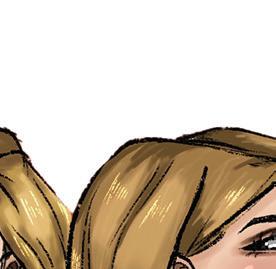








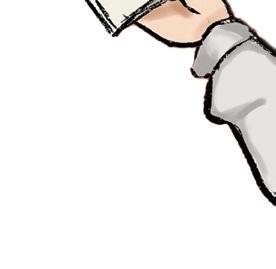


As people increasingly turn to social media for their news (follow us @thesaintsta, by the way), the local newspaper is a dying form of information, and, with it, goes local, un-politicised news. We’re




But most of all, this editorial is truly a love letter, and a thank you — yes, we’re still talking to you — our loyal readers. You may grab The Saint to paste the Photo section on your wall, or to complete the bi-weekly crossword, or maybe even to make your Halloween costume (newsflash, anyone?). Regardless, seeing your eager outstretched hands on Thursday morning makes it all worth it. So please enjoy The Saint however you please. There’s something for everyone.




loyal readers. You may grab The Saint to make your Halloween costume







Regardless, seeing your The Saint










Alden Arnold Deputy Editor-in-Chief
Arnaz Mallick Deputy Editor-in-Chief
Lucian Passante Deputy Business Manager
Olga Alonso Blanco Events Editor
Matteo Veratelli Science & Technology Editor
Ben Bagley Sport Editor
Isabelle Holloway Head of Illustration
Finn Lister Senior Copy Editor
Peter Napier Podcast Editor
Zainab Haji Head of Web & Social Media

EDITOR: MARIA EBRAHIM
IONA CARRUTH News Writer
Tickets for the St Andrews Student Union’s flagship Fright Night event dropped two days early on Wednesday, 15 October, selling out before most students even knew they went live. The Union had advertised a 9am release for Friday, 17 October on Instagram, triggering outrage when wouldbe buyers discovered the early sell-out.
Third-year student Eve Thomson was one of the many students who have found themselves ticketless for Fright Night. Thomson told The Saint, “I think they shouldn’t have released the tickets early because then people thought they were doing it on Friday, but they were already sold out, so it is very frustrating.”
Thomson continued, “I would like to know how there wasn’t this issue in the last couple [of] years — especially when they didn’t have 601 — so surely there was a smaller capacity [...] I don’t remember it being this bad.”
Following the overwhelmingly negative response from students regarding the early ticket release, the Union made an Instagram post on Thursday 16 October, announcing that they would release another batch of tickets at the originally advertised time. The post stated that “due to overwhelming demand from the early bird sales for Fright Night, a decision was made yesterday to
release our General Sale tickets early.”
One student who managed to secure a ticket in the highly sought-after release was third-year Kat Mortimer. Even successful buyers say they’re frustrated by the confusion over how — and when — the tickets were sold. Mortimer told The Saint, “I just think
so many people missed out because of it.”
Despite this second release of tickets on Friday 17 October — which was the originally advertised date — many students still find themselves without anywhere to go on Halloween night. This is evident from the massive influx of students seeking

it’s really odd. I’m a third-year student, and I’ve been going to pretty much all of the big Union events since first year, and I’ve never known them to release tickets in the way they did for Fright Night. It’s a shame that
resale tickets on the St Andrews Ticket Exchange Facebook page. The page has been flooded with requests from students desperately seeking a coveted Fright Night ticket, with students offering to
pay more than double the original price.
Once again, the Union attempted to rectify this mistake by creating a waitlist, which students can sign up for using their email. However, it is up for debate if this will fix the current situation. Mortimer commented on the new waitlist: “I don’t really think there’s anything they can really do to fix the situation, so I guess the waitlist is a nice effort. However, their mistake isn’t really something you can fix because you can’t do anything about the [number] of tickets already purchased if the Union is at capacity. I guess the best thing they can do is learn from this mistake.” Fright Night tickets for 2025 have been available to buy on the Union Events website since last year, put on sale immediately after Fright Night 2024. There has been speculation over whether this is the reason why tickets were sold out so quickly, especially considering first-year students would not have been able to purchase tickets so far in advance, leaving them at a disadvantage in the Fright Night ticket scavenge. The Saint reached out to the Union for information regarding how the waitlist system will work. The Saint also asked the Union to respond to the concerningly high rates at which resale tickets are being sold, as well as a general comment to address student concerns over the ticket debacle. However, at the time of publication, The Saint received no response.
Photo by Ada Newton
CECILY TODD News Writer
New Drug-Checking Pilot in Dundee Scotland has launched a new £1.5 million national drug-checking pilot in Dundee, marking a major step in harm-reduction policy. The Leverhulme Research Centre for Forensic Science at the University of Dundee, supported by the Scottish Government, will analyse samples from local testing sites to detect emerging synthetic substances such as potent nitazene opioids. The pilot complements the UK’s first licensed drug-checking service in Glasgow, where users can legally test pills and powders for contaminants and receive harm-reduction advice. Drugs and Alcohol Policy Minister Maree Todd hailed the initiative as a “vital step” in Scotland’s national mission to reduce drug-related deaths, while Professor Niamh Nic Daeid said the Dundee lab will provide critical intelligence on drugs in circulation.
Similar applications for services in Edinburgh and Aberdeen have been submitted.
Scottish Government Sued for £170 Million Over Recycling Scheme
Biffa Waste Services is suing the Scottish government for £170 million after the collapse of Scotland’s proposed Deposit Return Scheme — a recycling initiative meant to encourage the return of bottles and cans. The company claims that it invested heavily based on “clear assurances” from then Green Party minister Lorna Slater that the scheme would proceed. Biffa argues that it spent around £50 million preparing for the rollout and lost £115 million in projected profits after the government delayed the launch in 2023. The delay followed a dispute with the UK government, which refused approval unless glass recycling was excluded to align with a UK-wide model. Scottish ministers deny negligence, insisting Biffa “was aware of the risks involved.” Lord Clark ruled the case could go to a full hear-
ing, noting that “questions remain” about Biffa’s losses. Biffa stated that the company acted “in good faith… on the expectation that the delivery of the scheme had been mandated by the Scottish government.”
On 20 October, Nicholas Rossi was sentenced to at least five years in prison for rape in the US. After faking his death in 2020 to evade charges of rape and fraud, he resurfaced in Scotland under the alias “Arthur Knight,” claiming to be an Irish orphan. Arrested in a Glasgow hospital in 2021, Rossi insisted he was a victim of mistaken identity, even donning an oxygen mask and a three-piece suit during court appearances. However, DNA evidence and distinctive tattoos proved otherwise. Rossi was extradited to the US in 2024, where he was convicted of raping two women in Utah in 2008. His victims described lasting trauma, while Judge Barry Lawrence branded him a “serial abuser of women.” Rossi awaits
“The Church of Scotland no longer feels able to keep it as a place of worship.”
his second sentencing in November 2025. More information on the issues raised in this article can be accessed via Rape Crisis Scotland on their website https://www. rapecrisisscotland.org.uk/help-helpline/ or by calling the National Rape Crisis Helpline on 08088 01 03 02. Advice and support on reporting sexual assault from the University can be found by visiting https://www.st-andrews.ac.uk/students/sexual-misconduct/.
Continued from page 1
for me to walk past him. None of it was worth it — it just seems like it was taken as a joke.”
Though current signage is misleading, the St Andrews Big Boss company no longer exists. The company “Big Boss Turkish LTD” was dissolved on 2 September 2025, according to the UK Government’s Company Information Service. The business currently operating at the 13 Bell Street location is the new takeaway Birdies, owned by Theo Kalopedis.
In an interview with The Saint, Kalopedis said he took over at the beginning of April 2025. He described his experience running Birdies as “extremely stressful” thus far.
“I have got to live the rest of my life with what he did, but he gets to walk about free.”
“[The shop] lost a lot of customers because of what happened with the previous owner, which obviously we had nothing to do with,” Kalopedis said.
“There’s a bunch of people that still believe that the old owner is still involved in the business, which is obviously not true.”
Kalopedis expressed his commitment to honesty with the St Andrews community.
“I can’t afford to just sit back and wait for it to blow over… I want to put my foot forward and let everybody know that [Birdies] ownership [is] me, it’s my family, it’s nothing to do with the previous owner.”
He also explained his feeling of obligation towards the community, especially towards students, stating: “Because they technically feed me, I want to feed them.”
“There [are] big societies that are already coming in asking for us to sponsor them,” Kalopedis said. “Next year, I’m going to start sponsoring different things. We already sponsor St Andrews Football Club.”
Most importantly, Kalopedis wants to make Birdies a safe environment for all.
“I want all the staff to be trained properly. I want everybody to be nice. I want people to feel welcome and safe when they come [into] the shop,” Kalopedis said, adding: “Whatever I could do to help out, I’m willing to do… We just want to be good to people, and we want people to be good to us.”
The University of St Andrews’ Feminist Society has provided a comment on its role in advocating for greater awareness and action around gender-based violence,
condemning the actions of Emre.
“There’s a bunch of people that still believe that the old owner is still involved in the business, which is obviously not true.”
“Recent conversations within the Feminist Society have centred on how to make nights out in St Andrews safer and more inclusive for everyone, particularly in light of the charge of sexual assault against the owner of Big Boss. It’s extremely distressing to see such a heinous act of violence perpetrated in our community, and we stand firmly with the victim.”
The society’s commitment to promoting safety, especially after dark, is embodied in its annual Reclaim the Night campaign, “a week-long initiative that raises awareness of violence at night against
women and other marginalised groups.”
“This year, as part of the campaign, some of our committee members will be stationed outside the Union Quiet Room on Wednesday, 19 November, to offer support to anyone who may need it,” said the society spokesperson, adding: “We recognise that not all students — especially women and marginalised groups — feel entirely safe on nights out, and we believe it’s important to meet students where they are.”
While the Feminist Society wants to “emphasise that the responsibility for safety should never fall solely on individuals who feel vulnerable,” they also want to share advice:
“Go out with friends you trust, check in throughout the night, and don’t hesitate to leave a situation if something doesn’t feel right. Make use of available safety resources, such as the online Police Scotland reporting form, the St Andrews Security and Response Team, the Night Bus service, and the University’s Report and Support tool.”
The Saint reached out to Police Scotland for comment on this scandal, but at the time of publication, no response was received.
“We stand firmly with the victim.”
ROWAN HOOVER News Writer
Eden Mill St Andrews Distillery has renewed its partnership with the University of St Andrews’ student golf programme, continuing as an Official Partner of Saints Golf for the 2025–26 academic year.
The renewal comes at a high point for the
University’s golf programme, following a historic season of success both domestically and internationally. The Saints Golf Performance Team was crowned British Universities and Colleges Sport (BUCS) national match champions for the third time in four years, cementing its reputation as one of the leading university golf programmes in the UK. The season also delivered a rare double triumph in the Royal & Ancient Golf
Club of St Andrews Student Tour Series Order of Merit, with golf scholars Judd Sundelson and Judy Joo winning the Men’s and Women’s Order of Merit titles respectively.
Eden Mill’s collaboration with Saints Golf reflects a shared commitment to excellence, innovation, and heritage, values that connect the distillery and the University. The renewed agreement ensures that Eden Mill will continue to play an integral role in supporting one of the UK’s most successful student golf programmes.

The partnership also highlights Eden Mill’s connection to the St Andrews community. As Scotland’s first single-site carbon-neutral distillery, Eden Mill’s investment in sustainability mirrors the University’s broader environmental ambitions, contributing to the community’s vision of progress. Through its initiatives, the partnership aims to help and support the next generation of student athletes while promoting responsible production and local craftsmanship in St Andrews.
Eden Mill shared a post on Instagram celebrating a recent visit of golf scholars to the distillery, saying: “Over the weekend, we welcomed
some of the @ustagolfscholars team to the distillery. They were walked around our new home by Euan and then showed us how it’s done on our golf simulator. Their visit follows the announcement of our renewed sponsorship… We are looking forward to watching what they’ll go on to achieve over the course of this year!”
The University’s golf programme continues to expand, offering opportunities for golfers of all levels, from beginners to elite international competitors. With over 350 members, Saints Golf is now one of the largest and most inclusive university golf communities in the country. Its pathway system allows students to progress from introductory coaching sessions, delivered in partnership with the St Andrews Links Trust, to competing on the international stage.
The University’s golf scholarships are supported by a network of partners, including The R&A, Saints Sport, the St Andrews Links Trust, and the 600 Club, a global community of donors who help student athletes thrive in the home of golf.
Eden Mill’s continued support follows a series of renewed collaborations that celebrate the University’s golfing heritage.
Photo
by
Ada Newton
NATHALIE HANZLIK-MEECH News Writer
On Sunday 19 October, Revd Dr Donald MacEwan, the University Chaplain, spoke during the final formal service in the 650-year history of St Monans Church. Situated on the coast in the village of St Monans, about twelve miles south of St Andrews, the church was built in the 1360s and has served as a place of worship since.
“There was a real mood of sadness that a tradition of 650 [...] years was changing.”
St Monans Church has reportedly survived “the Reformation, wars with England, splits and reunions in the Church, a Second-WorldWar blast, and every storm tide blowing up from the Firth of Forth” — but is unable to survive the “winds of change blowing through the Church of Scotland,” as stated in the University Chaplaincy Newsletter. In December 2022, the Church of Scotland made a decision to sell St Monans Church, alongside 400 other churches across the country. As this process will be
finalised shortly, St Monans Church arranged a final service last Sunday to mark its farewell as a place of worship for the Church of Scotland.
In an interview with The Saint, Revd MacEwan discussed the atmosphere at the final service. “There was a real mood of sadness that a tradition of 650 years of worship in that space was changing [and that] the Church of Scotland no longer feels able to keep it as a place of worship.” According to Revd MacEwan, the church is essentially as “it would have looked 650 years ago; the shape inside is the shape it has always been, and there are [...] medieval features that you can still see.”
St Monans Church is in the process of being sold to the St Monans Auld Kirk Enterprise, a community-based group planning to create a new space within and around the church. The renovations made by this group, which will take place in phases over the next four years, will include a community cafe, heritage display, space for concerts, conferences, and festivals, as well as a kitchen and accessible WC facilities. With these renovations, St Monans Auld Kirk Enterprise intends to “retain the character of the building” and will ensure that the “east end of the Kirk remains a sacred space for contemplation and reflection,” as outlined on their website. Events such as weddings, funerals, and christenings may still take place at the site.
Before starting his role as University Chaplain at St Andrews in 2011, Revd MacEwan preached
at St Monans Church for almost ten years. After finishing his PhD at Trinity College Dublin, already qualified as a minister, he came to Scotland in search of a church at which to preach. Revd MacEwan was interviewed by thirteen people for the position at St Monans and was then asked to preach in front of the whole congregation, who then voted on his appointment. “[A] lmost all of them said yes,” said the Chaplain. The decision of the Church of Scotland to sell St Monans Church saddens Revd MacEwan and many others in the St Monans community. According to Revd MacEwan, the Church of Scotland “has been facing significant changes, particularly in the Pandemic.” In short, the Chaplain believes the Church of Scotland is now confronted with “fewer people, less money, less energy.” As a result, the Church of Scotland has made nationwide efforts to consolidate the number of churches within parishes, closing approximately 40% of churches across the country, according to the National Churches Trust.
Revd MacEwan sees the practicality in this decision. He can imagine this would involve “Sunday services that feel nicer [...] a stronger sense of community […] more of a buzz […] and let’s be honest, it’s less work for the minister doing only two services rather than five.”
However, he also stated that “sometimes churches decide to get rid of the wrong building.”
In the view of Revd MacEwan, “in villages, if you can keep the church building open […] it
is full of benefits for the village. It’s another resource when other institutions are leaving, like banks, chemists, doctors, jobs, post offices […] it’s a focal point for the community.” Revd MacEwan interprets the Church of Scotland’s decision to sell St Monans as “publicly [saying]: “we don’t need a 650 year-old building” and that “our faith is smaller than it used to be.”
Revd MacEwan wishes for the new St Monans Church building to be “restored again for new generations to come in, be refreshed and inspired, find community and courage.” Most importantly, he hopes that it “remains a place of prayer.”
“The Church of Scotland no longer feels able to keep it as a place of worship.”
Reflecting on the many historical churches around St Andrews, Revd MacEwan believes the university town is “a place that shows [that] sometimes churches are sold and find fresh purpose, but sometimes churches just become ruins or derelict.” He pointed out that either can happen, “depending on history.”
TUANA KARDAS News Writer
Cromars Classic Fish & Chips eatery has been shortlisted in three categories at the upcoming Scottish Fish & Chip Awards, which will take place in Glasgow on 10 November 2025.
Owner Wendy Napthine Frame told The Saint that the Cromars team was “absolutely over the moon” to be nominated in three different categories, including Best Fish Supper (East).
“To be nominated in three categories is such a proud moment for our whole team. Running a small business in hospitality isn’t always easy, so to have that hard
work recognised really means the world,” she said. “We put so much effort into creating the best experience for our customers. Everything is cooked fresh to order, and we want everyone who walks through the
door to feel welcome, whether they’re locals, students, or visitors from across the globe.”
The nomination follows the recent publicity from musician Justin Bieber, who posted photos on Instagram of himself outside the shop while in St Andrews for the Alfred Dunhill Links Championship.

“It only happened a few weeks ago and is one [moment] we’ll never forget,” Frame said.
“We’ve had our fair share of famous faces over the years, but this was on a whole different level. What made it so funny was that Justin loved the fact that we didn’t recognise him at first, then he went and posted about us himself. The reaction was incredible.”
“Bieber’s surprise post on social media ‘brought a real buzz to St Andrews.’”
The visit — which made headlines on Sky News, ITV, and BBC Radio 5 Live — drew international attention to both Cromars and the town. Frame added that Bieber’s surprise post on social media “brought a real buzz to St Andrews.”
The nomination highlights St Andrews’ thriving food scene. “This recognition isn’t just for us; it shines a light on all the fantastic independent businesses that make the town so special,” Frame said.
“[It] just goes to show that a simple, perfectly cooked fish supper can still make headlines.”
REESE COLBERT News Writer
On Monday 13 October, University of St Andrews Professor Christopher Smith was announced to be the newest Chair of the National Library of Scotland.
A member of the School of Classics, Professor Smith has worked with the University for over 30 years, and recently told The Saint that he looks forward to “bringing what I have learnt at St Andrews [...] to the National Library of Scotland.”
The institution is Scotland’s largest library, with over 34 million items. Its collections include rare books, manuscripts, maps, photographs, music, moving images, and official publications.
The National Library claims to be the “guardian of the printed and recorded memory of Scotland, held on behalf of the nation,” stating on their website that they “fulfil a statutory role as one of the nation’s most significant cultural and research organisations.”
The appointment — which will last four years, running from 1 January, 2026 to
31 December, 2029 — was declared by Cabinet Secretary for Constitution, External Affairs and Culture Angus Robertson.
In a statement on LinkedIn, Roberston said: “Professor Smith has had an illustrious career both nationally and internationally, and I am pleased to appoint him as Chair of the National Library of Scotland. He has a wealth of experience gained at prestigious bodies such as the Arts and Humanities Research Council, the University of St Andrews, and the British School of Rome, and I look forward to working with him.”
Prior to this appointment, Professor Smith led an extensive career in research and scholarship, both nationally and internationally. He directed the British School at Rome from 2009 to 2017, held a Leverhulme Trust Major Research Fellowship for work on his book, The Roman Kings: A Study in Archaeology, History, and Power, between 2017 and 2020, and currently serves as Executive Chair of the Arts and Humanities Research Council, a position he will hold until August 2026.
Professor Smith is also the International Champion for UK Research and Innovation
and is a member of the governing bodies of Science Europe and the Global Research Council, titles which provide Professor Smith with an international perspective on scholarship and diplomacy as he moves into his newest position.
Following the news of his appointment, Professor Smith said: “Libraries are the custodians of our past, places of wonder and discovery for everyone, whatever their age, and critical to a future in which knowledge and truth remain prized. I am deeply honoured to have the opportunity to work with the National Library of Scotland as it fulfils its mission for Scotland and beyond.”
As Chair, the Professor will be expected to lead the Board of Directors in communicating the vision and goals of the National Library to diverse audiences, maintaining the institution’s relevance in an increasingly digital landscape.
In a statement from August, the National Library acknowledged that “The way people access culture using digital technology also continues to evolve, so we must keep innovating to meet demand and stay relevant.”
Professor Smith is aware of this demand for innovation as he approaches the assumption of his position, stating that he hopes to “continue the long tradition of stewarding the nation’s record of its past into a digital future.”
His appointment also comes in the wake of the National Library’s pledge to “address the silences” in their collections, analysing their inventory to identify under-represented communities and work towards creating a “more representative” national collection in the future.
Professor Smith addressed this need for improved representation, specifically mentioning the importance of diversity in contemporary scholarship: “Historians know how easy it is to lose our memory of the past,” Smith said. “We look for overlooked voices, and when we cannot find them, we feel their absence.”
As the beginning of his term approaches, Professor Smith relayed to The Saint that he looks forward to “working with other trustees and the CEO Amina Shah to start the Library’s second hundred years.”

SAFFRON ROWELL Viewpoint Writer

EDITOR: SAM SPENDLOVE
We can count bodies — but not much else
Life can sometimes feel like an endless list of qualifying questions. From “What do you study?” and “What do you want to be?”, to star signs, favourite pets, party tricks, and “What’s your biggest red flag?” After a while, as someone who is much more comfortable writing an article than making conversation, this can become tiresome. Onerous, even. But there is one question which irks, confounds, and aggravates me more than any other: “What’s your body count?”
There are several things wrong with this question. Not only is it incredibly invasive, but it euphemistically poses as chill. It’s putting on a chic little cap, ordering a flat white with full-fat milk, telling you how it just doesn’t believe in taking life too seriously. The two words “body count” function under the assumption that you are comfortable sharing something so personal with anyone who asks. Indeed, if for whatever reason you don’t want to answer, your body count must be crazy high or crazy low. After all, don’t you have nothing to fear if you have nothing to hide? It’s just a number. Which brings me onto the second assumption which “What’s your number?” makes: that by acting so nonchalantly about sex, reducing it to one little number, we really can take away its power.
I’m not trying to sound like a priest or your mum, or some 18th-century ghoul in grey clothing standing behind you in the mirror, harping on about the virtues of a chaste life. I don’t believe that sex is bad or that the entire population should abstain. Nonetheless, no matter how blasé our generation treats the concept, sex still matters. On a personal level — between two (or more!) people — and on a societal level. Someone’s body count, or rather our opinion of someone’s body count, affects how we view them and the value we place on them. Otherwise, why would you ask? In fact, the Institute for Family Affairs published an article this year showing that we are still more likely to judge our partners more harshly based on the number of partners they’ve had before us. Moreover, the resurgence of traditionalist, right-wing cultural politics sharpens this latex knife. The first hits on YouTube for “body count” are “Dangers of a High Body Count”; “Body Count Meaning for a Girl vs. A Boy.”; and, my personal favourite, “She Said
Her High Body Count Had Nothing To Do With Her Cheating!” No matter how much we dress it up in not-that-deep tissue paper, adorn it with tequila-flavoured bows, “What’s your number?” holds far too much cultural meaning for us to consider it a chill question.
As my deep dive into YouTube’s purity police shows, double standards still prevail for men and women surrounding the ‘acceptable’ number of people to sleep with. Aside from sexist “hot-take” influencers, we can see this wrapped like ivy around the stone foundations of our cultural upbringing. The term slut, for instance, has been actively used within our society since 1450. Slightly more recently, in the admittedly underrated 2011 rom-com What’s Your Number? (sound familiar?), we see the heroine nervously downing champagne as she realises she’s slept with more people than her friends, then undertaking Herculean efforts to get back with an ex so as not to go over a certain body count. In Four Weddings and a Funeral, we see Hugh Grant keel over in shock at Andie MacDowell’s character’s list. In every season, nay every episode of Sex And The City, we see how quickly four ‘best friends’ turn to slut-shaming Samantha. Yes, we undoubtedly live in a different world now.
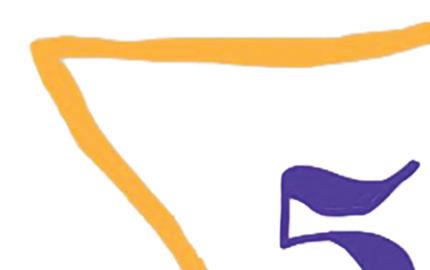

But given how ingrained our societal perspectives on sex have been for so long, how removed can we really expect to be from the 1450s, 1990s, or 2010s?

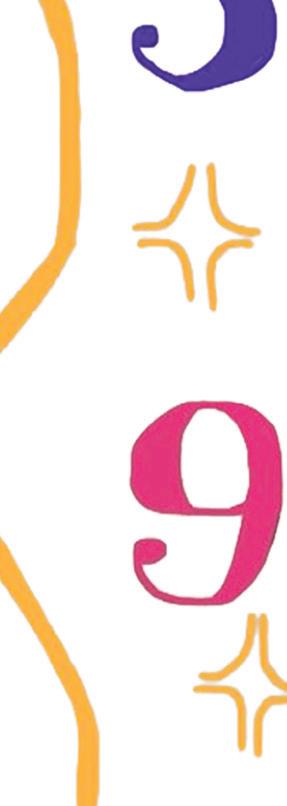

Aside from its invasive nature and misogynistic underpinnings, I believe that the question of body counts poses a deeper, subconscious danger. Our focus on encapsulating experiences in lists and numbers, such as a Kiss List (and you know what else), can give off the impression that life is quantitative — that it is made up of figures. “How high is your body count?” can be read as “How much of a man/woman are you?” When travelling, my friends kept lists of hookups as proof of “how much fun” they had. On one level, this is natural; as we know, the human brain does love a listicle (See: ‘For the Love of the Listicle’ in our last issue). However, with more complex topics, we forget that lists and numbers serve to simplify, not to define. Unlike in the scientific world, we cannot categorise human experience by a set quota. How many bodies doth


This enduring notion creates a pressure to conform to social norms — so much so that people feel the need to lie in order to seem more ‘innocent’ or more ‘manly.’ But who decides these norms? Who decides what’s innocent? What’s manly? What is the perfect number?








make? And how many make a man? Our understanding of life is not built in this way. Human experience is fundamentally qualitative. By this, I mean we are shaped by our thoughts and feelings, not statistics. Can you really gain any idea about someone’s personality or worldview by asking how high their body count is? Can something as human, as diverse, as formative as sex really be explained by a number on a list? Every encounter is unique and will have affected your partner or friend in ways unique to them. If you’ve slept with ten people, five of them might have left you feeling less than yourself. Let’s be honest here, not all sex is good sex. The idea that one number can define someone’s personality is, to me, not only misguided but plain dumb. This reductive view of the world does not account for our vastly differing situations in life. It excludes its own defining ingredients: whether you’ve been in long or short-term relationships, life experiences, religion, culture. These ingredients make up a person. Body counts, on the other hand, essentially do nothing more than pluck a number out of thin air. It’s almost comical that we change our perspectives of people based on a number which could, for all we know, be entirely fictitious. Why should we use it to form an opinion of people over far more valuable questions? Why have we given one number so much weight? Especially given its personal, invasive nature, its gendered double standards, and how reductive it is of life’s experiences. Really, we would be better off sticking to star signs.



























Is the year abroad nothing short of a glorified holiday? My mother — and a handful of my Instagram story viewers — probably think so. I spent nine months on the University’s WIYA programme in Spain, teaching English at the University of Cádiz. Working rather than studying is a niche version of the year abroad, but it gave me a muchneeded perspective on life outside the Bubble. A year abroad is the one opportunity you have to travel, live somewhere new, and establish a different rhythm of life without full-time responsibilities. You can’t replicate that later on, as an adult, once work and demanding schedules define your life. It was a once in a lifetime window, which is exactly why it was worth it. And it isn’t just for language students — whatever you study, the same benefits apply. You gain independence, perspective, and the resilience that comes from reconstructing your life and forming bonds with strangers in a new, unfamiliar setting.
“Let’s call it what it is — higher education’s nicest loophole.”
Before I left last September, I told my flatmates I wasn’t sure how I’d cope without the life I had established in St Andrews. Like most students with what I like to call ‘St Andrews syndrome,’ for two years I had settled into the town and forgot that there was anything beyond these three streets and two beaches. The routines and experiences are familiar, closeknit, and safe. My year abroad was the inverse. The safety net disappeared, and I was dropped — literally — into a foreign land where I had to assemble my early twenties from the ground up.
At my placement, my students were my age or older and most of my colleagues were around 40, which reminded me that university isn’t a template for real life. Within a month, I learnt it didn’t matter if I was tired, hungover, or not in the mood to teach. When a class had commuted in for their hour-long session with the native English speaker, I had to turn up prepared. Student life, especially at St Andrews, is largely self-centred — employment isn’t. It runs on reliability, coordination, and doing
your part even when it’s inconvenient. The year abroad stripped back the inward-looking habits of university and replaced them with the need to be accountable to more than just myself.
It paid off more to have this experience at twenty rather than eighteen on a gap year when you’re fresh out of school. At twenty, you already have a degree in progress, friends to return to, and enough context to compare systems rather than just observe them. Time away shrank St Andrews to a realistic size. It’s a wonderful place to study but it isn’t the whole world — however loudly the Bubble suggests otherwise.
Yes, the workload was lighter, with fewer assignments and more daylight. The lack of structure is part of the value because you have to make your own. A year abroad is a universityapproved time-out with unforgettable travel opportunities, language practice, and the allure of light duties. It won’t turn you into a worldly wanderluster or make you a better student, and it’s unlikely to dazzle an admissions panel. What it does is give you the space to gain competence in practical life outside of higher education and, in my case, marginally improve my Spanish fluency without drowning in the pressures of academic coursework. Let’s call it what it is — higher education’s nicest loophole.




Studying abroad has been a conversation topic since September of first year. My friends and I would talk about where we’d go “when the time comes,” as if it were some inevitable part of the degree, somewhere between your first Raisin and writing your dissertation. I always assumed I’d want to, because who doesn’t want an excuse to move somewhere completely new for a few months? But lately I’ve been wondering: Would it really be so bad to just stay in our lovely little corner of Fife?


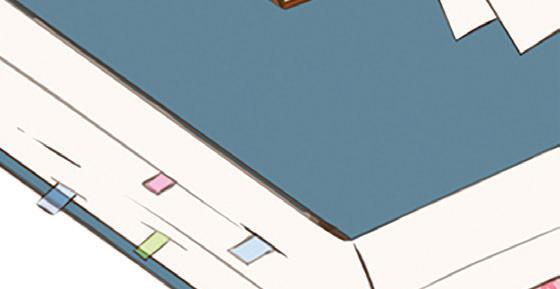




Every semester, tons of St Andreans announce they’re off to study abroad — Melbourne, the US, Hong Kong, you name it. I can’t help but question why we’re all so desperate to pack up and leave a place that’s already abroad — unless, of course, you’re actually from Fife. If you think about it, many of us already did the hard part. We adjusted to a town where there are more red gowns than taxis, where the same three streets are somehow a whole world, and where everything closes by 6pm. It’s not that I don’t see the appeal. I do. The idea of pressing “refresh” on your entire life for a few months sounds thrilling, at least in theory. Who wouldn’t want to move somewhere new and claim it’s just “for academic reasons”? But the part no one advertises is how much admin it takes to reinvent yourself. New



“Lately I’ve been wondering: would it really be so bad to just stay in our lovely little corner of Fife?”
flat, new friends, new kettle. Perhaps I’m lazy. We all spent our first years just trying to find our footing, and now, just like that, right as it starts to feel comfortable, we’re told to pack up and go “expand our horizons.” But even that promise is misleading, because only a handful of people actually get to go. It’s not an opt-in adventure; it’s a lottery. After all, for most of us, the original horizon already expanded when we moved to St Andrews in the first place. That was the study abroad. The study abroad pitch is always about growth, but it’s a very particular kind of growth: the kind that sounds great when you’re in an interview reflecting on your time at St Andrews, how you got to study both in this little town and Australia. You really have to “cultivate a global perspective.” Thus, the thin line between adventure and marketing brochure blurs fast. And yet, with all this talk, I’ll probably still apply. Hypocritical? Perhaps. But, PSA, it’s not because I think St Andrews isn’t enough — it is. It’s because the idea of starting over again, terrifying and inconvenient and deeply expensive as it sounds, also feels like a test worth failing at least once. Maybe that’s what studying abroad really is: Not a chance to “broaden horizons,” but to realise how broad they already were in the first place. That the version of yourself who moved to St Andrews with two suitcases and a questionable raincoat already did the brave thing. So, is studying abroad worth it? Probably not, at least for me. But then again. . . ask me after I’ve finished my application essay about “embracing new perspectives.”
Illustration by Dasha AndreeVa
ALDEN ARNOLD DeputY Editor-in-ChieF
The arts are in crisis. As austere, slicing government budgets increasingly dominate Western fiscal policies, the more ‘decorative’ features of civil spending — those not encompassing essential healthcare, social welfare, and law enforcement — have been pushed to the wayside. Art has tumbled into a vast and empty field. Optimism about creative career prospects has plummeted, theatres emptied, and galleries foreclosed. By every vital sign, the arts are bound for the care home. Since 2017, funding from UK arts councils has decreased by 18%. Between 2009 and 2021, per-person cultural funding was slashed by 50%. In 2024, 32% of museums saw a fall or complete end to funding over the previous year. The story is not so different in most European countries, nor in the United States, whose 2026 budget proposes eliminating the National Endowment for the Arts. More concerningly, however, is how this public pessimism has trickled down to the youth: in Britain, GCSE and A-level arts entries have decreased by 47% and 29% respectively since 2010. Though alarming, this trend is not incomprehensible, even to the most liberal
it alive, so why don’t we do it?
and romantically-minded. Priority ought to be given to the necessities; in the same cities that see museums close and publications go under, NHS lines have gotten longer and household spending tighter. While these issues have accelerated post-COVID, recent arts budget cuts are just the same boot pressing harder. It’s the lazy, miserly answer to condemn governments and councils for the arts’ grim fate. One must look within, or better yet, in a mirror, to point blame.







Yes, it is your fault that the New Picture House is a golf bar and that the Roger Billcliffe Gallery in Glasgow will close this year. In 2000, the average American spent 7.9% of their income on arts and culture entertainment; by 2023, this number had decreased to just 5%. People still engage with the arts, despite what these numbers suggest, but they tend to



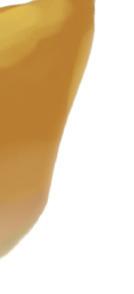
pay less to experience them. With the popularisation of music media like CDs and Spotify, listeners can pay £13 a disk or £12/ month instead of attending live concerts. The same is true of YouTube and other streaming services for video media and the performing arts. We have simply outsourced art — we pay companies, not artists. Furthermore, governments have dramatically democratised arts and culture since the turn of the century. In 2001, Britain made all Department for Digital, Culture, Media and Sport museums free to the public — these include the British Museum, National Gallery, Tate, V&A, among many more. Even within the few artistic services governments don’t subsidise, we still find loopholes to skimp on art patronisation. We pirate films and TV, download contraband book PDFs, cancel and renew free subscription trials — anything to avoid spending a single solitary pence on artistic works and experiences. Historically speaking, being an arts patron was a privilege, and providing support for the arts
was an accepted social norm at every level of society. Before it was Creative Scotland or the US Department of Arts and Culture, it was the Medicis who sponsored Michelangelo and DaVinci, medieval peasants who contributed their income to construct local churches, and Londoners who donated to evacuate artefacts from the British Museum during the Blitz. It was individuals, not bureaucratic councils, who took accountability for and pride in the flourishing arts. Our modern society, gone soft from the comforts of the welfare state, has grown complacent, taking for granted the costless immediacy of government-sponsored arts consumption. We have put no individual financial effort into the arts for the past 30 years, and now, as they begin to disappear, we look around surprised, asking where it’s all gone. So buy a ticket to the theatre. Go to the bookstore. Spend a few pounds on that concert, that gallery, that album. The arts don’t operate in a vacuum. They need viewers, listeners, and readers, but they also need money — your money. If you wish to consume art you must pay for it, especially when the government won’t. The art exists for you, after all.
Illustration by Kyla Biesty
Please, Sir, Can They Have Some More?
Our dear leaders might just need a raise
GEORGES TOULOUSE Viewpoint Writer
Politicians have a bad reputation these days. Most of the politicians of today can be categorised as either bland, incompetent, heartless, power-hungry, or corrupt. Gone are the days of inspirational or even good leadership. I believe that part of the solution to this morose political class lies in one simple change: paying politicians more.
In the UK, the Prime Minister is paid around £190,000 per annum, which, granted, places him in the 99th percentile of pre-tax income in the country. However, he is quite literally the head of the government, de facto the most powerful person in the land (at His Majesty the King’s will and pleasure, of course). Meanwhile, the head of HSBC receives over £6 million compensation per annum while being, I would argue, slightly less important than the head of government. The President of the US (the current one being somewhat of a statistical aberration, Qatari planes, lawsuit settlements and all) is paid $400,000 per year while commanding the largest economy and military the world
has possibly ever seen. At the highest level of the American private sector, making ten times that would be laughably low.
The fact is that those elected to high office are at the top of their fields. They are educated, well-connected, and exist in influential circles, while being paid comparatively pitiful salaries. They are very aware of the affluence they could obtain were they in the private sector. Of course, then, the worst of these politicians will try to see what they can scrape out of the treasury, what little hidden commission they can obtain out of a public deal, or what bending of the rules will get them a publicly-funded private butler (cf. the National Rally in France).
Paying politicians more would limit the incentives to cheat and make the risk/ reward balance tip in favour of, you know, not stealing. I would even argue that it is legitimate to pay the decision-makers, those who make the rules in the name of the People, rates that are not dwarfed by those of high-level private sector jobs. Why should a president or prime minister make as much as a corporate manager when they are quite literally in charge of leading
a whole country? Why should the minister of finance not be paid as much as a finance bro two years out of university, when they are making the rules which Jake follows?
An added benefit would be that, once out of office, we wouldn’t be inundated with politicians’ never-ending yearly book tours, or their Netflix specials, or even have to hear about the cruises they take on their billionaire friends’ yachts. Paying them more while in office would limit the cheapening of that office and the monetisation of their status and contacts once they are out.
Another benefit of paying politicians more would be, very simply, a better stock of politicians. The ‘political elites’ are not a fixed body à la the aristocracy of yesteryear. It is, in theory, a body accessible through merit, which should allow the brightest to emerge. However, there is a double problem.
First, lower wages in politics reduce the diversity of the political class. Those born into privilege will have an easier time having their merit recognised due to their access to education and connections. The precariousness of political office, hinging on elections whose results are uncertain,
further reduces the pool: If one doesn’t have the resources, putting everything on hold to campaign for a relatively poorlypaid post is a risky gamble — much less so if one already has a million in the bank.
Second, those with the intelligence, social skills, even maybe the empathy and competence necessary for public office are made to choose between lucrative careers in the private sector or poorly paid, poorly regarded jobs in the public sector. Many of those who could have been great politicians will flee the public sphere, reducing the pool of electables to the few selfless public servants and the many driven mainly by powerlust. Perhaps the price of better governance is, in part, one of numbers. Paying our elected officials more will lead to a less corrupt, larger, and probably brighter pool of leaders. The price of giving a pay raise to politicians is, in the greater scheme of things, negligible — maybe the price of a fighter jet per year. And 30 years down the road, we might just like our leaders again.
Don’t wait for Movember — wear them all year round!
POPPIENA HORSINGTON Viewpoint Writer
As the weather turns foggy and grey, this can only mean that Halloween is almost upon us. But, once the cobwebs settle and the face paint washes off, there is another major holiday next in line: Movember! In this town, such an occasion is not to be taken lightly. Many people go on daily runs and dips to admirably support men’s mental health. Athletics aside, the most legendary aspect of Movember is by far the moustachegrowing of it all. Handlebars, horseshoes, goatees, every kind is welcome! However, I am sensing that some malicious members of the public are using this important cause as a chance to experiment with their facial hair in a manner that cannot be judged or criticised because it is supposedly in the name of charity. Let me preface this article by stating that I am in no way going to diss the validity of Movember as a charity endeavour. Let the men have their mental health! I’m not going to stop them; in fact, I am going to support them this November and all the other Novembers to come. Moreover, this article refers to a tiny percentage of the facial
hair faction of Movember. If you grow your ‘stasche to support the lads struggling, then do not fret, my anger is not towards you. My issue lies with those who make the calculated decision to selfishly manipulate this charity event to suit their vain beauty risks. When I plucked my eyebrows too thin during Breast Cancer Awareness month (the very month of October, by the way), did you hear me telling people it was for a good cause? No, because it was a mistake. So why do you, Pricklyhair McGee, over in the corner, go around telling people you’re growing the moustache for men’s mental health? You started growing it, maybe because you saw lots of hairy faces, and realised that it didn’t suit you. I’ll give it a pass; a fashion faux pas can happen to anyone. However, when you start changing your tune and begin telling people that you are doing this for a specific reason then I take issue.
You know you are a fraud


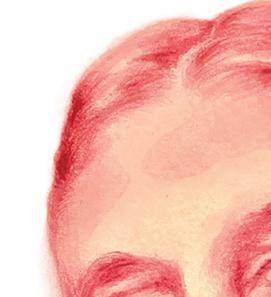

of Movember, too scared to shave for fear of looking like a misandrist! It would not even be a problem if these snakes in the grass were honest about their error and admitted that they just wanted to try something new and had been sucked into a cause much bigger than themselves. But when you start treating others as if they are in the wrong for uncovering your dark truth, then you have to be cut down. There are so many cold months in the year to experiment with your facial hair. Why do you pick the one that makes it so important in the public eye? Do you see this charity event as a shield to protect your selfishly grown moustache?





I revoke your fraudulent armour. You need to achieve the confidence to attempt facial hair in


September, October, December, January, and February, instead of abusing the safe space of Movember. As an inspector of the streets and its inhabitants, I see a lot of bristly beards and vibrant vibrissa in November. For this reason, I urge you to trust me when I tell you that we can tell the difference between a moustache grown for a good cause and a beard allowed to fester because you wanted to take this opportunity to shake up your look. Facial hair grown with empathy for a mental health crisis is radiant, no matter how scraggly or patchy. Its profound spirit emanates through peach fuzz or thick bush! A moustache mooching on a charitable event will always look underwhelming because you have coopted an event that you do not believe in. At the end of the day, it is really not that serious, and if anything, you look like more of a bad person for interrogating people’s motivations for growing a moustache instead of just assuming that they are supporting a good cause. But I know that lurking on these pavements are people who are abusing charity for vain purposes, and I had to get it off my chest so that they get it off their faces.
by Isabelle Holloway
Why do certain men always have their hands in their pockets?
SAM SPENDLOVE Viewpoint Editor
Last semester I was walking down Market Street, killing time before an appointment with the optometrist, where I would undoubtedly be told I was due to become the third blind mouse. It was May, warm enough that I didn’t need a coat and could hold an iced coffee without my fingers going blue. Then, suddenly, a group of golfing men crossed Market Street — Americans, aglow with globe-trotting freshness, and (I assume) anticipation of an afternoon passed with flatirons and tiny white balls. Upon further inspection, they struck me as a group of creatures bound by instinct to appear similar: they all had on the same shirt and trousers, with only slight colour variations, and they all had their hands in their pockets. All of them. And if one of them was holding something in one hand, he placed the other in his pocket. And if one of them saw something interesting, he’d remove one hand to point it out before putting it away again, like it was something vulgar. Now that it’s getting colder, it’s only right
that we should be using our pockets. I use mine sometimes. But men always seem to be using their pockets — in particular, men who feel compelled to participate in a certain performance of gender. I’m not going to make the mistake of drawing an equivalency between gendered performance and sexuality, but hopefully you all can guess who I’d be talking about if I did.
First of all, health and safety hazard! I was always told that putting both hands in your pockets is a one way ticket to a broken nose; you’re basically a human bowling pin. Next time I’m on Market Street, I’m gonna take a bowling ball and see if I can earn me a strike. Second of all, is holding things considered gay now? I get that your average BillBradTom probably doesn’t want to look like me when I’m prancing to my lecture with an iced latte, but they don’t have to go to that extreme. No matter the weather, these men are using their pockets. If they’re walking their dog, one hand is holding the leash and the other is in their pocket. If they’re standing by the bus stop, their hands are in their pockets, sometimes excused from duty by the need to hold a phone. If they’re walking with their
girlfriends, both hands are in their pockets, and she’s being tugged along with her arm looped in his. I’m surprised they don’t play football with their hands in their pockets.




Such is the gendered system: a rulebook for behaviour, the guidelines with which we’re meant to make sense of other people. I don’t see what I’ve observed as disconnected from it. What does it say about me that I’ve noticed that men with their hands in their pockets are different from me? What does it say that I could never see myself trailing behind them as they cross Market Street? That my hands are rarely found in my pockets? Who they learned to be is not who I learned to be. It might take a lifetime to know exactly how, but the fact that we decide to do different things with our hands isn’t inconsequential. For them, the aim is to accentuate the shoulders, restrict movement in the upper body, and altogether look right For me? Who knows! That’s for somebody


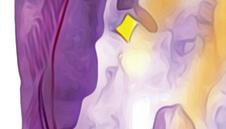






else to notice, somebody who can see outside of me in a way I just can’t. That’s for somebody who looks at me in the way I looked at those men crossing Market Street. If somebody looked at you the way I looked at those men, what patterns do you think they’d notice? What’s your hands-in-pockets?
Which is what I would’ve said if I were still profound. As it stands, I’ve decided to distribute warm gloves to every man with a history of chronic pocket usage. With my help, I know we can protect millions of men’s noses across the country. And, who knows, maybe beforehand we can get in a little game of Market Street Man-Bowling.
Illustration by Sandra PalaZuelos Garcia
The opinions expressed in this publication are those of the authors. They do not purport to reflect the opinions or views of The Saint.
ADRIAN HANLON
Viewpoint Writer
…and maybe the podcast.
Whatever you listen to on that dreaded fifteen-minute walk to your next tutorial, during which time you must give 200 nods to people you vaguely know and hardly like while the Scottish rain falls freezing on your head — stop. Take out your headphones. There are so many little things you’re missing out on. And we all know it’s the little things in life that make the biggest difference.
“I felt like I was getting nothing from music anymore, and even podcasts were beginning to grate ”
A few days ago, I turned down a mate who kindly offered to give me a lift home from Aldi. the lift would have involved a detour for him, and as I said, I like to walk. As I set off down Largo Road I pulled out my headphones as was my habit, then quickly put them away, as is now my habit. This new habit is one I
developed after endless months following a routine of finding a few new songs, listening to them until bored, then finding a few more new songs. After enough repetitions of said cycle, even the new songs began to bore me. I felt like I was getting nothing from music anymore, and even podcasts were beginning to grate. So, I decided I would listen to nothing. Yet, I did not find nothing; I found a whole lot of little somethings, little somethings so unique and ordinary that they exist nowhere but in the real world.
Here’s what I saw and heard on my walk home from Aldi, that I would have never seen or heard had I been listening to music: one, a shirtless blonde guy in grey jeans sprint down a hill, slap a green metal street cabinet, and sprint back up the hill; two, a middle-aged Scottish man hold open a restaurant door and jokingly charge “50p, 50p, 50p” to every person he let through; and three, a girl practicing operatic high notes on South Street, which prompted a bearded man with a toddler to turn around and nod his head, impressed. All three, for different reasons, put a smile on my face.
Besides occurrences like these, which happen often but not all the time, I find I pay more attention to the world without music playing in my ears. With headphones, I might notice people I know but nothing
else (you have no idea how many coffee shops I’m ignorant of because I don’t look), but without them, I notice everyone who passes me. I take stock of every building I walk by — I see the peeling paint, the grand windows on top floors, the wynds between houses that I never knew existed. And I listen to snippets of conversation. You might not care about any of these things. You might find five new songs a day and never get bored. You might notice things without hearing them. I understand that. I’m not saying that listening to music on your way to class is a bad thing — music boosts mood, reduces stress, and can even enhance cognitive function — but look at what’s beneath everything that I just told you: What I’m really advocating is connecting with the external world. It is no secret that in St Andrews, we live in a bubble – hence, The Saint’s ‘Love in the Bubble’ column — and, in the modern world, we increasingly create for ourselves more and more layers of that bubble. Some of you,












I’m sure, clock over ten hours a day on your laptops (that’s another bubble), you then pull out your phone and go online (that’s a bubble), and whenever there is a moment when you can’t look down at a screen — because you’re walking or cooking or whatever — you stick in headphones and connect to the digital bubble in that way. It seems like there’s no escape. The outside world is vanishing from our lives. And so, beyond being bored with music, this is why I rarely walk with headphones. It’s an escape from stimulation, a chance to let my mind idle, and an opportunity to decompress. Try it.
by Lyla RitZler
ALEX MCQUIBBAN Viewpoint Writer
It’s dinner time! And for my partner and me, that means enjoying our meal in front of the telly. Despite both of us being 23, we’re still iPad kids at heart — at least when it comes to our mealtime rituals. For whatever reason, dinner just doesn’t feel right without also having an episode of Bob’s Burgers or Gilmore Girls on.
But many have critiqued this practice. Allegedly, eating in front of the television distracts you, causing you to eat too quickly and too much. There is also a certain stereotype associated with telly-eating. Those who indulge in this practice also over-indulge in unhealthy foods and cannot maintain an interesting conversation to save their lives, forcing them to supplement their drab personalities with outside entertainment. At least, that’s how the story goes. While I am in no position to refute the many studies which tie this ritual of ours to bad eating habits, I can at least offer a defence of our particular situation against those naysayers who would paint us as
boring and unhealthy. We both love to cook, so although we can sometimes be partial to treating ourselves to takeaway, we’re generally separated from the screen by a lovely bowl of something filling, home-cooked, and nutritious — say, a nice pancetta and courgette gnocchi — or a plate of beautifully cooked steak and asparagus.
We’re also reasonably chatty, even when we watch TV — think Gogglebox or one of those awful reaction YouTubers, except hopefully a tad less annoying. That being said, we’ve known each other for a long time, spend almost every waking minute with each other, and so, are entitled to a moment where we can just turn off our brains entirely. After all, the measure of any good relationship is not only how well you’re able to fill the void but also how comfortable you are with just letting it be there when it doesn’t need to be filled. There’s not much better than watching something you enjoy with someone you enjoy while eating some food you enjoy. Plus, in between work,







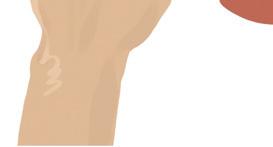



school, extracurriculars, and household errands, sometimes the only time you have to watch TV is also the time when you’re not doing anything other than eating dinner. Even this sacred time of ours is sometimes spent in the presence of others, or out at a restaurant, where bringing in the TV wouldn’t be appreciated. Now, do we eat too quickly or too much? I don’t personally think so, but it doesn’t really matter either. The most important thing is that we enjoy our food, and more generally, that we are enjoying ourselves. As much as we are both sceptical of ever-encroaching technology, of generative AI, of children, and, God forbid, of adults who cannot spend an hour without being glued to a screen, we also understand that not every ritual has to be the type of
ritual that a dietician, a priest, and a hippie could all unanimously agree upon. We understand that, as (mostly) responsible adults, we get to set our own rules, and while those rules might be very different from the ones we eventually set for our kids, this gives us the time now to treat ourselves.
That is the general lesson that I would like to impart. When it comes to your own personal life, you do not need to sanitise everything, to live as if your life were being planned by a lifestyle coach / health-guru with decades of experience, including a short stint at a monastery in Outer Mongolia. Believe me, those who spend their waking hours reading Atomic Habits or listening to this-or-that podcast on the quad are not necessarily an ideal you should strive towards. Half of them are probably on their way to having a soulless finance job or, worse, wishing they had one but being forced instead to peddle their own self-help tips to others on the internet.
Just don’t do heroin every day and try to live a decently fulfilling, authentic, and morally virtuous life, and you should be grand!
Illustration by Sarah
Knight
The opinions expressed in this publication are those of the authors. They do not purport to reflect the opinions or views of The Saint.
DESDEMONA SMYTHViewpoint Writer
There’s this moment — usually somewhere between splitting fries and sharing a secret — when I catch myself staring at someone I adore and think: Do I want to kiss you … or just talk to you until the world ends?
Attraction, for me, will never be a straight line. Desire is an abstract painting — messy, layered, full of colours that shouldn’t go together but somehow do. The boundary between platonic and romantic isn’t clean. It’s watercolour bleeding across the edges, a little too beautiful to want to contain. People like to believe that you always know when it’s romantic — that your body will tell you, your heart will shout it, your mind will fall in line. But sometimes, all three speak different languages. Sometimes, what feels like butterflies is just admiration in a cuter outfit.
I remember meeting someone once who made my stomach flutter every time she smiled. I’d replay our conversations in my head like they were scenes from a French film — intimate, delicate, perfectly lit. And then one night, after hours of laughing and wine, I realised I didn’t want to kiss her. I just wanted to be near her — to braid her hair, drink tea, and talk about life until we
forgot the time. It wasn’t desire. It was devotion.

But then there are the connections that can’t be classified so neatly. The ones that hum like static, that make your pulse quicken when your hands brush. You tell yourself it’s friendship, but you start noticing how often you think about them, how your messages sound a little too much like flirting. You wonder if you’re imagining the tension — or if you’re both pretending not to feel it.


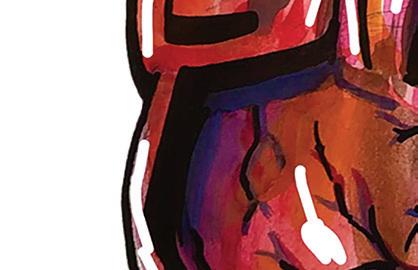


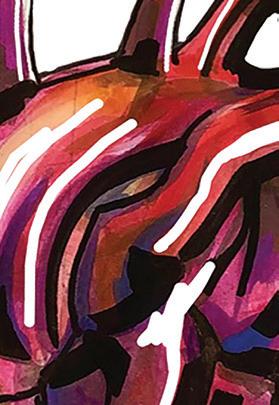

The truth is, the ingredients of friendship and romance are often the same — affection, admiration, care, excitement — just mixed in different


measures. The difference isn’t in what you feel but how it moves through you. Friendship simmers. Romance sizzles. But sometimes, the heat sneaks up on you, before you know it, the line you thought was clear has turned into smoke. And maybe that’s okay. Love, in all its forms, isn’t meant to be organised into tidy drawers. Can we, as humans reliant on identity politics, be okay with love being a living thing that shifts depending on who we are and who we’re with?

Sometimes it’s slow and steady; sometimes it’s chaotic and breathtaking. Sometimes it’s both. What’s surprised me most is how often my feelings are a mirror. That the people I find magnetic aren’t always the ones I want to kiss — they’re the ones who
“There are the connections that can’t be classified so neatly.”
make me want to be more. To grow, to glow, to step into a version of myself I didn’t know existed until I saw it reflected in their eyes. So I’ve stopped trying to categorise every spark. I hold hands when it feels right. I say “I love you” without explaining what kind of love it is. I let affection be what it wants to be — tender, complicated, undefined. Because the moment I try to label it, I risk shrinking something vast into something small enough to fit on a form. The more I live, the more I think maybe the goal isn’t to define our feelings, but to experience them. To let connection exist without the pressure to name it. To love, openly and honestly, even when we don’t know what kind of love it is.
Illustration by Marios DiaKourtis
MILLY SMITH
Viewpoint Writer
St Andrews is renowned for its generally upper-class, wealthy student body. This university attracts real-life princes and many members of the Manhattan social elite. St Andrean fashion reflects the student population’s abundant wealth: a Barbour jacket practically comes with the offer of acceptance, Goyard totes are thrown onto lecture hall floors, and Pablos are spilt onto Flabelus-adorned feet. It makes sense, then, that the concept of budgeting doesn’t seem to come up in conversation. The aftermath of Reading Week entails hearing stories of debauched nights out in Paris, Oslo, or Barcelona. These trips are often booked on a last-minute whim, when staring at the lurid green walls of Aikman’s cellar for too long has you hallucinating about Norwegian forests. However, the cost of these late-notice flights or luxury hotels never seems to factor into the discussion. Yet it seems to be these very same
members of the student body who you will find lecturing on the subjects of climate change or fast fashion. In a self-aggrandising manner, they will tell you how they stock up their cupboards at Naturity because of the importance of zero-waste living. As you meet them in the aisles of Tesco, they will complete an ethical assessment of your basket choices, decrying the lack of avocados, premium almond milk, and other luxury products of plant-based origin. At a ball, they will audibly sniff upon hearing your dress is from Zara, taking it as an opportunity to introduce the topic of slave labour. Their Reformation dress, they remind you, is ethically sourced. You will be received with scorn if you cannot donate via the link on their latest Instagram infographic, as you obviously don’t even care about political activism. Not taking the time off work to attend a political march apparently highlights your distaste for human rights.
I do not intend to criticise those who, having the means to do so as a student with limited disposable income, continue to deploy their ethical judgement in all that they buy and do. What I do intend to criticise, however, is the denunciation of those who,
since they are already scraping by, cannot spare a penny for the free-range eggs or the charity GoFundMe. The cost of living in St Andrews is already high, with balls that cost double the average weekly shop, and price-hiked pubs filled with golfers that outprice the regular student. It should not be a crime to purchase the occasional goingout top from a fast fashion brand, or to opt for a meal-deal sandwich in preference to avocado toast and an oat-milk matcha latte.
Living morally is a privilege. Having the leisure time whilst at university to read up on political issues and invest time in activism in lieu of working a pub job is also a privilege. Having this privilege is not something to be embarrassed by, but neither is the reverse. Without being aware of someone’s economic situation, it is unfair to evaluate the morality of their consumer choices. Think before you stare into a Tesco’s shopping basket with disdain.

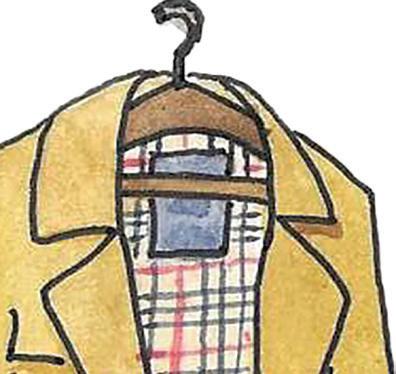
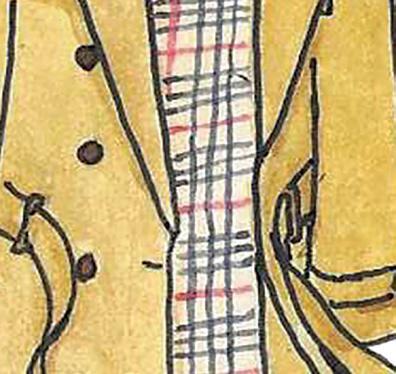



EDITOR: MRUNMAYI KAMERKAR
JENNY CHAMBERLAIN Features Writer
Walking down the cobblestone streets of St Andrews, 12 North Street might be easy to miss. Unassumingly set back from the street by a green garden and framed by fading red tiles, the building holds a treasure trove of historic artifacts inside its walls. From old fisherwomen’s daily gowns to the names of sailors stranded at sea written on a ceramic jug, the St Andrews Preservatio n Trust curates and protects the artefacts and histories of our little town within the St Andrews Heritage Museum and Garden.





Once the site of a grand cathedral, now overrun with students, golfers, and young families, protecting the history and culture of St Andrews presents unique challenges. To understand how the Preservation Trust tackles this, I spoke with the Trust’s Chairman, David Strachan.

“It ‘held about 30, it was tiny, but it had so much character.’”




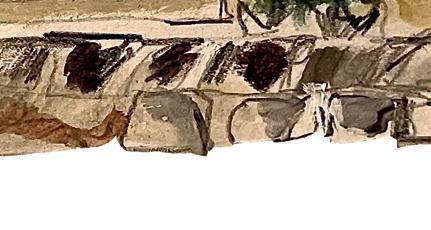

In 1937, the community of St Andrews established the Preservation Trust with two main goals: to preserve the character and heritage of St Andrews and to provide locals with access to the town’s artifacts. Strachan explained these aims to me as we toured the museum on a quiet Wednesday afternoon.
Strachan took me through the museum’s vast collection of St Andrews objects. Ranging from the artistic and historical to the scientific and technical, even the most mundane items reflect a moment of the town’s history that could be lost if not preserved. “When a chemist shop was closing, we [collected] all the old glass bottles that they had…. We’ve got old dentistry tools, like wires – some of them were totally brutal, but actually people probably thought it was better than not getting any treatment at all,’ he explained.
With objects like these, the Trust focuses on showcasing how the town’s history can be found around every corner of town — a present reality for every person who interacts with St Andrews. For Strachan, it’s important to display how the town’s past illuminates its present. Pointing to a satirical painting on the wall, with a donkey guiding an elephant down an eerily familiar street, Strachan pointed to the outline of what is now the Central and shops that are now
Sainsbury’s.
Walking further through the Museum’s top floor, Strachan again stopped in front of an image, this time of a small, two-storied cowshed — the Byre theatre, as he remembered it from his youth. It “held about 30, it was tiny, but it had so much character,” he recalled. The actors used to sneak up the stairs to the hay loft to change between scenes before the town renovated the building, paying tribute to the former structure by keeping the name Byre, or cow-shed.
The past did not feel so far away inside the Museum. “If you have a look at this house here, it’s set back from the road, that’s very typical of St Andrews,” said Strachan, describing the various architectural motifs specific to the old fisher homes on North Street. “In the past, they would have kept fishing nets and things like that down below, and then upstairs would have been where families would have lived upstairs, but they were very poor conditions to live in, I can imagine.” Today, these houses are modern student flats.
The Trust doesn’t only work to preserve the past — they also work to bring the past into the present. When I walked into the museum, a fourth-year student volunteer greeted me, and throughout my hour-long stay, a number of young people rotated in and out of the building. Jokingly, Strachan tried to sell each of them the 5£ Trust membership. “We try to involve our students in [the Trust], and they’re a great
asset in terms of having volunteers who are prepared to come in and work with us. And honestly, our students who come here are absolutely fantastic,” he said. Strachan expressed only admiration for the youth and excitement for the students who come here. They’re “absolutely fantastic, really fantastic,” he said, rejecting the notion of ‘Town versus Gown.’ Strachan’s perspective on the 10,000 parttime residents of the town seemed to reflect the perspective of the Trust as a whole. The history of the town is not something to be guarded for the permanent residents, but something to be shared with everyone who interacts with St Andrews. The Trust works to help everyone who walks these streets understand where they are standing. Strachan even pointed out a thesis one student had written about the history of mussels in the town. “We published [the essay] as a booklet because it [was] so interesting. We have an award, it’s intermittent when we put on the competition. And [this student] won the Murray Medal,” Strachan remembered. This story seemed a point of pride for Strachan, an example of how the Trust was beginning to work its way more actively into the community, a move that he credited with the ‘huge increase’ in membership over the last three years. Today, the Trust stands at 525 active members. Awards and medals are not the only way that the Trust engages with the town’s present. At the end of our tour, Strachan and I made our way to a vast green space
behind the historic building, an open lawn with a singular fruit tree in the middle. The Trust renovated this outdoor area to add more open space in the town centre. ‘You can see students come in here and they read, because on a day like today, you come in and read and it’s just quiet,” Strachan said.“[The town] used to have lots, but St Andrews does not have many open spaces like that anymore.” A space for students and families alike —for the wine society to host an event or for a parent to bring their child to roam around the freshly mowed lawn — Strachan envisioned a more united St Andrews, not only in past and present, but between the town and its students.


Sainsbury’s. asset in terms of having volunteers who like that anymore.” A space for students
“The Trust renovated this outdoor area to add more open space in the town centre.”
It’s one thing to preserve the town as it once was, by filing complaints against new developments or buying uncared-for land, but it’s another to work towards the town’s future. The St Andrews Preservation Trust tries to strike a balance between these two ideals, merging both worlds. St Andrews is, and will remain, a historic town, but there is so much more to its future. If we understand the history of our little community, we can discover more sustainable ways to act in our present. By engaging with the Trust and supporting the local history, we not only preserve historic buildings like 12 North Street, but create a new and ever-changing community.
Illustration by Mia Fish
GRACIE JONES Features Writer
When I walked up to the vigil for Palestine nearly three weeks ago, the first thing I saw was a little girl holding a candle with the Palestinian flag on it. A sizable crowd had formed just outside the ruins of Greyfriars Chapel, but amidst all the noise and the people, I could only focus on the way the small candle lit up the child’s face. St Andrews Students for Justice in Palestine (SJP), one of the organisers of the vigil, wanted to strike a tone of “mourning and resilience.” Set against the chapel ruins, with fallen leaves at our feet and the glow of candles held by several children, that was certainly achieved. “We wanted it to be a cathartic space where people could mourn,” said Sarah Aziz, a member of SJP. “So often, we have to seem strong and forceful in protest, but we wanted
to show that mourning isn’t weak. We wanted to give people the space to let their grief out.”
With the desire to open with “tone of mourning” in mind, the vigil began with a speech from the University of St Andrews Interfaith Chaplain, Bill Shackman. It was helpful to “have that more spiritual grounding where you can just mourn and actually tap into your own humanity,” Aziz explained.
After that, SJP presented several speakers, including Aziz herself, whose approach was more advocacy-oriented. She described SJP’s desire to bring reassurance with grief: “We will stand firm. This is for us to bounce back. This is allowing our hearts to feel [grief] so that we can then act on it better.”
Several different societies spoke, sharing various statements of support and solidarity with the people of Palestine. Many speakers also honoured Palestinian art and heritage through poetry readings. Emotion was tight in the air as one speaker
read a poem by the famed Palestinian author Mahmoud Darwish. As she spoke the final line and the crowd leaned into the mournful ambience, many people held roses passed out by SJP at the start of the vigil.
“It was more of a memorial than a protest,” said Aziz. “It was very cathartic.” Aziz felt that providing a space to show emotion and “just cry” rehumanises Palestinians, who may just seem like the faraway subjects of grim news articles to many in Scotland. Aziz explained that creating a formal memorial event allows Palestinians and their advocates a chance to stand still and stop fighting for a second. “How do you come to terms [with a genocide] as a human being?” she asked. SJP wanted to give people space to “honour that in their hearts” and “just feel.”
The challenge in St Andrews with events like this is getting people to engage. After all, Palestine may seem far removed from many people’s daily lives, and Palestinian
advocacy groups in St Andrews haven’t always had the easiest time getting large groups of supporters out on the streets. SJP, however, found that many were interested in the vigil. They judged it as a large turnout for one of their events and felt people were happy to have a non-protest event that still acknowledged the suffering occurring in Palestine. The group thinks that there is a lot of support in the student community, and hopes that the recent cease-fire agreement will make reluctant students feel more comfortable joining in Palestinian advocacy.
“The cease-fire has brought joy and hope,” said Aziz, but she emphasised that student activists for Palestine cannot see this as the end. “It doesn’t somehow mean things are fine. The daily structure of violence and apartheid continues, and we cannot become complacent.”
IRIS PRITCHARD Features Writer
It was the night of 30 September, and Saffron Rowell’s day had been filled with lectures, tutorials, and the library basement. The one thing getting her through it all was the promise of a night of Szentek life drawing. Around 6:55pm, she skipped excitedly into United College, only to be turned away due to overcrowding. Heartbroken, she and her friends decided the only thing that could save their night was a cherry Chouffe at Aikman’s. As they slumped into an empty table in the cellar, a man stepped in front of them. In one hand, he held a Garfield teddy with a peculiarly placed slit on its back; in the other, he held a microphone. “I have been practising ventriloquism,” he said, before proceeding to shove his fist up the teddy. This was Rowell’s first introduction to St Andrews’ Comedy Society. Every other Tuesday, the Comedy Society hosts stand-up nights in Aikman’s Cellar. “For me, the Comedy Society offered a sensational break from my mundane everyday life. I had never heard of the comedy club before that Tuesday, but I am so glad that I found them [...] [it] was one of the most absurd things I have witnessed at St Andrews,” Rowell said. Rowell’s experience in Aikman’s that night was exactly what the Comedy Society intended. Eva Rieckewald, the freshly elected President of the Comedy Society, said they aim to “offer the best medicine, which is laughter, and give
people an opportunity to come together and experience something that is exciting.”
Rieckewald has been involved in the Comedy Society for the entirety of her time at St Andrews, and she expressed how grateful she was for a comedic community at university; “I came to St Andrews specifically wanting to get involved in comedy”. She found the community incredibly welcoming — “they are not scary, it’s just a fun time.”
In keeping with Rowell’s characterisation,
Rieckewald described the funniest standup act she had seen in St Andrews, which involved a comedian pretending to be a “praying mantis that eats foam [...] He was wearing green goggles, a bald cap, and telling jokes as a praying mantis. It was possibly the stupidest thing I have ever seen, but I think I literally shed tears, I was crying so much,” Rieckewald recalled. “I love seeing comedy built on ingenuity, because that is such a random concept, but executing it so well was hysterical.”
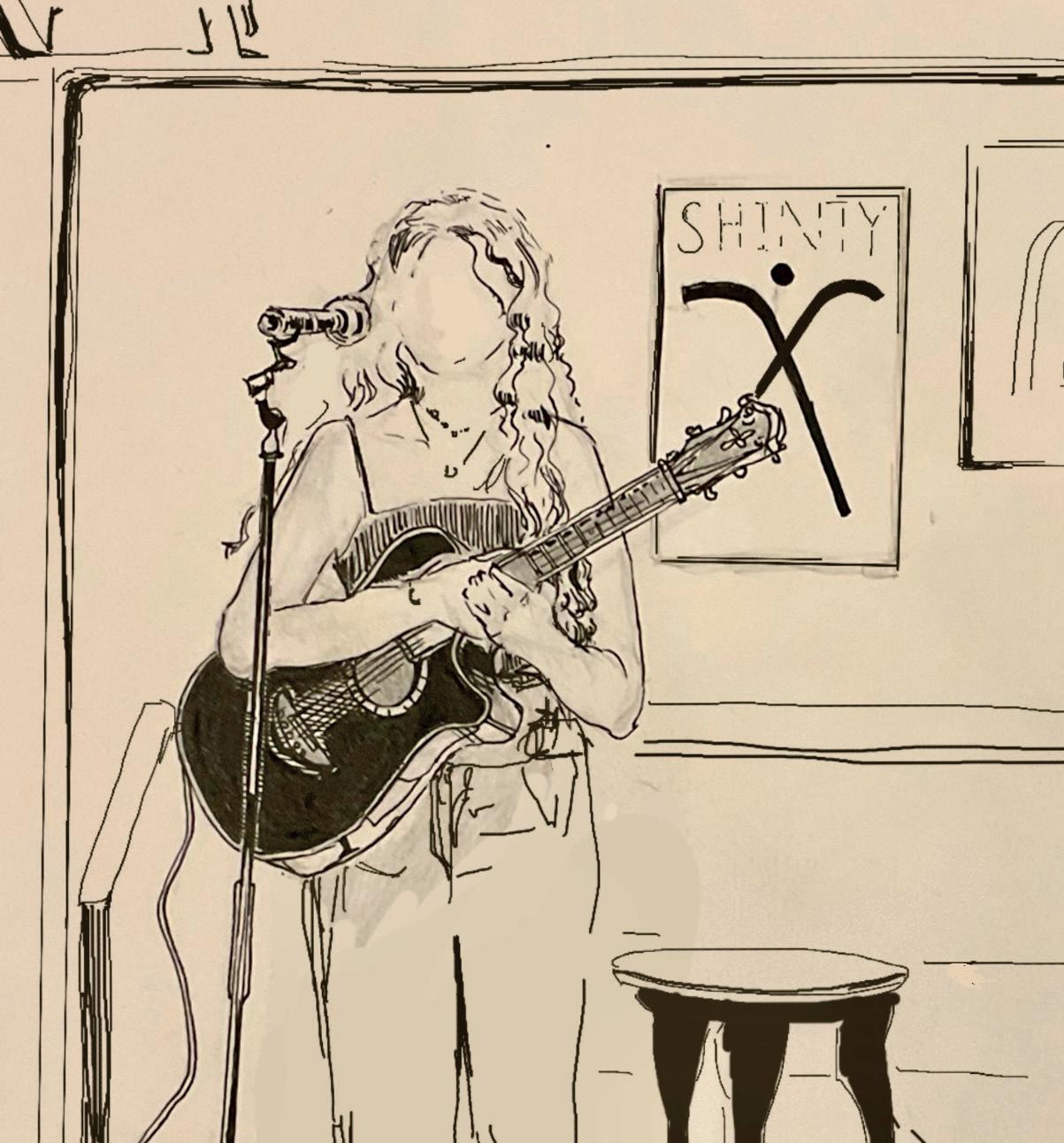
The Comedy Society not only provides entertainment, but also creates a space for students to get involved. Before every show, the society sends out a signup sheet to its regular performers. Recently, they have also experimented with an open mic segment. “It’s so that people can get up there and perform,” Rieckewald
said. “It has been going really, really well. I have been really impressed by how funny these people are just off the cuff. I think it should be a spontaneous thing sometimes,” she said.
The Society also works with comedians outside of the University who live in Dundee, Edinburgh, and Glasgow, creating a space for interaction and exchange. This provides students at St Andrews with the opportunity to work with comedians across the country and perform around Scotland.
“If people are interested in performance of any kind, I would highly encourage them to come to one of our shows,” Rieckewald said. “We love putting them on, and we love bodies in the room and people who are there, ready to laugh and enjoy themselves. We are lucky enough to have a regular booking at Aikman’s now, so we are there every other Tuesday night.”
With all the chaos in the world and stress of deadlines, comedy and laughter provide a much-needed (and occasionally absurd) refuge. “Comedy is an art of joy,” Rieckewald stated. “It is an empathy sport. You ask the audience to feel what you feel, and [to] laugh with you. It is cathartic for everyone involved, and it is a great way to spend time and connect with people. I think, in general, comedy is so important because you can check everything that is wrong and upsetting at the door.”
ANNABELLE MACKEY News Writer
If you stumble into Farmore Interiors, you’ll find yourself lost in the clutter of couches and pillows and candles. The list of the store’s items and amenities could be endless. But beyond the array of furniture and interior design consultation hides a more exclusive “list,” one involving the growing American student population.
“It started 30 years ago as an interior design service,” said Juliet Rathbone, owner of Farmore. “I would go out to people’s houses during the day while the children were at school, and then in the evening, I would do the quotes and the invoices and the estimates.”
As time passed, Rathbone decided to expand the business: “One day, when [the children] got slightly older, I was picking them up from school in town. I saw a little shop across the road come up for let and I just walked in on a whim and said, ‘I’ll take it.’”
“We used to do ball gowns and things for all the student balls,” Rathbone said, “and I also had a baby shop on Church Street next to Fisher and Donaldson. [...] But at that time, I had three children, three dogs, three businesses.”
Eventually, Rathbone consolidated her businesses into the Farmore brand. Now, it runs the majority of its operations on South Street, with an additional Farmore Home warehouse-style location.
“Access to and knowledge of ‘The List’ is completely by word of mouth.”
If you walk around Farmore, you’ll see the accumulation of Rathbone’s ventures. Baby clothes, toys, gifts, pillows, centrepieces, and Christmas decorations are combined, juxtaposing interior design with retail. From Rathbone’s view, the uncurated atmosphere makes the store feel like home. “We try to facilitate home through our renovations, but also just in the environment,” she said.
To achieve this, Rathbone has incorporated property management within renovation practices. In addition to caring for overseas golfers’ properties, Farmore has become globally recognised among enclaves of American families for student property management. “Say your parents decided






while you were in second year to buy a flat and maybe let a couple of rooms out to your friends,” Rathbone explained, “We’d renovate it. [...] Then, when the owner’s children leave the flat, the parents tend to want to keep the flat, but they need some kind of revenue. So then we take it on and find somebody to rent.”
The dynamic created ‘The List’ in Farmore’s student operations. ‘The List’ is an exclusive and coveted organisation of student tenants in Farmore’s managed properties who benefit from a variety of ‘concierge’ style services. “We have a full team on hand: 24-hour plumbers [and] electricians, [that] are all [on] our own team,” Rathbone said.
Rathbone described property management for ‘The List’ to be much more involved than with Farmore’s golfer clients due to the high demands of students. “You just never know the next thing with the students. You could be having a really calm afternoon, and next thing the phone goes, ‘I’ve pushed the window out.’ So it’s [a lot of] damage limitation, communication, and organisation.”
There are other support services for members of ‘The List.’ Last year, Rathbone’s team organised the catering of a “huge Thanksgiving party” for parents and studenttenants. They also hand-deliver birthday cakes: “Even if it’s a Sunday, we’ll knock on the door and deliver it from the parents and say, ‘This is from your mother,’” said Rathbone.
Beyond the more comprehensive amenities, Rathbone ensures that the
students feel cared for: “If they need a private doctor, we’ll make sure that’s sorted out. They need a private dentist, or if they need to get somewhere, we’ll get them there. If they’re feeling unwell, we’ll make sure they’re looked out for. If [they] just need somebody at the other end of the phone, we’re [there].”
Access to and knowledge of ‘The List’ is completely by word of mouth. Rathbone appreciates this style due to the detachment of communication in a digital age. In fact, the greater Farmore Interiors doesn’t even have a website. The majority of digital communications occur on the business’s Instagram and Facebook pages, the latter of which Rathbone describes as “poor because we never get around to it.”
“I’m not about online or AI or robots,” Rathbone added. “I’m a lot about communicating and just being genuine.”
How exactly did this List come about? How did an interior designer evolve into the one-stop shop for American students’ needs? According to Rathbone, it all circles back to when Prince William and Princess Catherine were students. That was when ‘concierge’ style amenities and renovations for students began to take off.
“Before William and Kate came, I was asked by a family to do a full renovation on Howard Place opposite William’s flat. In it, there were five girls.” Rathbone said, “I’d done the sofas and furnishings for the flat William was renting. And that’s really when we kind of got into doing things for students,
because before that, students would make do with the most crummy houses.”
Rathbone also explained that the rise in American students following William and Kate’s studies contributed to the establishment of ‘The List’.
“There were very few American students, pre-Kate and William,” she added, “It was mainly English and Scottish, and French. So it was just around that time [when Americans arrived] that things took off. I realised that when people were asking me to do [these] things, that we kind of turned it into a part of the business.”
Part of what Rathbone attributed to her success with American clientele is her own background. “I’m half Austrian, half American. So, I very much get that the American mind is very different from the UK mind. When a parent comes, I immediately know why they’re doing that, why they’re thinking that, why and how we can solve the problem because I’ve grown up that way,” she said.
Overarching all business practices of Farmore, Rathbone emphasises customer experience. This value has become so deeply rooted that she has formed strong, long-lasting relationships with her clients. “We keep in touch with so many of them. They’ll tell me where they are or if they ever come back for a reunion. They always make sure they come in [the store]. One came in and brought her little son to see me the other day,” she said. Rathbone admires the level of comfort that her team has brought to clients. Combined with passion, she describes Farmore as “creating a space where you feel relaxed, happy, and comfortable. Not creating a space where somebody’s got Gucci to make it look good. It’s just creating that feeling of comfort.”
Illustration by Eloise Zhang
TAO YAZAKI Features Writer
“I view cooking as a kind of window into different cultures,” said Khinley Trott a fourth-year student studying International Relations and Philosophy.
“You can learn a lot about different places based on their cuisine...for example, Cucina Povera [in Italy] is born out of necessity, of using sort of underutilised ingredients and trying to make them into a dish that’s palatable,” Trott explained. Informed by religious traditions, cultural, and historical norms, Trott finds cooking to be a “great way to explore the world.”
“I have an interesting mix of cultures, I suppose, and you can see that in my cooking.”
In 2023, Trott, applied for MasterChef “on a whim” to push himself and his limits. He appeared in Series 20 of MasterChef UK.
“I started cooking when I joined university, so I’d been cooking for about six months at that point, and I enjoyed challenging myself and finding new recipes, particularly of places that I’ve lived in.” Raised in various places around the globe, including Senegal, Cape Town, Ethiopia, Malawi, South Africa, and Rome, Trott sees cooking as a “window into different cultures.”

MasterChef, which was a spin-off [that] started the year before I applied.” From there, the process moved quickly. “On January 5, 2023, I got an interview. In August, they phoned me and said, ‘We thought your application was very competitive, have you considered doing MasterChef rather than Young MasterChef?’”
Trott agreed and was interviewed in London. He was asked about “how [his] background had affected [his] cooking and what [he] would do if [he] had to choose an ingredient, what kinds of recipes they could expect if they presented [him] with a blind ingredients list.”
Trott also had to prepare a dish for the judges. He described the dish as a “Korean bulgogi with some mango, a kind of muchim, which in terms of taste, is kimchi-esque.”
“After that, it was all pretty smooth sailing from there.” The process was followed by background checks, a psychiatric evaluation, and ensuring that Trott was comfortable with being in the public eye.
Out of several thousand applicants for each series, only a small pool of 24 is selected. Trott thought that his background set him apart. “I have an interesting mix of cultures, I suppose, and you can see that in my cooking.” He added, “I’m also quite new to it. I was the youngest contestant that year and the second youngest contestant ever,” he added.
“There was a brunch [round] where […] I split my hollandaise about twenty minutes in, and so I had to make it in about ten minutes,” Trott recalled, describing the high-pressure moment that led to his elimination.“One of the judges went off to the corner, and they spoke loudly enough that I could pick out my name and that I was in trouble, but
not loudly enough that I could make out exactly what they were saying,” he said.
Despite being eliminated, Trott recalled his elimination positively. “At nineteen, I was the youngest by far of that cohort,” he said.“ I had a conversation with the other contestant who didn’t make it through like I did, and she had applied because her son, who was my age, had told her to apply. It was a nice moment.”
The judges on Trott’s season, Gregg Wallace and John Torode, have since faced allegations, the former of sexual misconduct, and the latter for using racially offensive language. When asked for an insight into the judges’ behaviour on his series, Trott replied, “I didn’t really experience anything too abnormal. That being said, with regards to Gregg Wallace, it wasn’t a surprise.”
“I have seen and heard from other contestants about things that [Wallace] did and said that were quite unpleasant,” Trott said. He described their behaviour as “very unsettling.” They often “added to the stress” of the competition, he remembered, “making comments about the way you look or the way you’re cooking,” or “moving things you’ve already arranged.”
Trott feels hopeful about the new judges, Grace Dent and Anna Haugh. “I think they are good choices... the changes that are being made are probably the right changes and [it’s] probably about time they were made.”
Reflecting on his experience almost two years later, Trott said, “It’s more of a fun fact, and I rarely bring it up, mainly because I didn’t go very far.” However, “it’s hard to be critical of how I performed, seeing as I’d only been cooking for a year at that point,” he added.
“At nineteen, I was the youngest by far of that cohort.”
“Especially in halls, where maybe you don’t have access to everything you want to have access to [...] You need to be more adaptable,” he explained.
Beyond not having a fully stocked pantry, “a lot of it is a question of confidence,” Trott said. “You have to accept that you might not like all the decisions you make, and you have to accept that a lot of decisions you make will fail.”
“It’s also quite a significant time investment, especially if you need to be washing up dishes, [and] especially if you’re cooking for one person,” Trott explained. A 2018 survey of 123 UK higher education institutions by The University Caterers Organisation reported that only 56% of student respondents cooked a meal from scratch on most days, with 76% of respondents citing a lack of time.
The second leading reason was a limited knowledge of how to cook a variety of meals. However, Trott insisted that “cooking is far, far easier than people think it is. As long as a few principles are followed, whatever you make will be edible in terms of taste.”
A brief interview with a former hall resident highlights additional challenges of cooking in university accommodation.

“I applied


“I initially for Young


Since returning to St Andrews, Trott launched his website, cookhinley.com, which explores recipes and cooking from a student’s perspective.

launched his website, cookhinley.com explores cooking from a student’s help when from home to in bridging the gap in cooking for yourself,” he said.














William Dawson, a former resident of Gannochy House, pointed out not being prepared for induction hobs, a limited fridge and counter space, citing concerns about hygiene in shared kitchens. Trott’s website aims to make it easier for students to overcome these obstacles.
“[My website is] kind of an amalgamation of the stuff that I’ve been cooking, particularly in the halls, because that was when I was exploring new things,” he explained. The site contains several recipes that Trott cooked successfully in halls, so with these recipes, you can too (despite the trials and tribulations of hall kitchens).
Trott acknowledged that there are still challenges to overcome. “There is a limited amount of exploration you can do with the ingredients available to you. For example, I haven’t made anything Latin American because a lot of the ingredients just aren’t accessible where we are.”


quite so easy as following
“I feel there isn’t that much help when you’re going from home to university [or] in bridging the gap in cooking for yourself,” he said. It’s not quite so easy as following a recipe.

Trott’s current exploration is finding alternatives to processed meals and accessible ways to grow food in student flats.
Illustration
by
MoKshita Nagandla

CROSSWORD BY
MadeLeine ABiGnaLe
ACROSS
1. Jane ___, novel by Charlotte Brontë
3. 1969 sci-fi novel by Phillip K. Dick
9. Country that gained its independence from Britain in 1947
10. Where to scoop a drink out of at a Halloween party (5-4)
11. (with 16d), How one acquires sweets on 31 October
12. Major holiday between Halloween and Burns Night
15. Inventor Thomas
17. Register
19. What someone who hogs a conversation does (4-5)
21. Method for locating objects via sound waves
23. Consumes a French cheese (4-5)
24. Poet Frank
25. ‘Can’t speak any longer’, in text
26. Book identification number
DOWN
1. Thought it would happen
2. Your options when being chased by a madman with an axe, perhaps (3-2-3)
4. What witches ride
5. What a group of bagpipe players might have (5-2)
6. Type of cable used to transmit audio signals between devices
7. (with 14d), Something one may carve in late October
8. What many St Andrews postgraduate students are working towards
13. What many will be donning come 31 October
14. See 7d (1-7)
16. See 11a (2-5)
18. What Elle’s Halloween costume in Legally Blonde may have been considered to be, by an outdated standard
20. ____ upon a time
21. Make out with, in England
22. Legal contracts used to protect confidential information
Isaac OLdhaM
Use definitions and wordplay to work out
CONNECTIONS BY MadeLeine
ABiGnaLe
OranJe
WORD LADDERS BY Luana van
Change one letter per step (using real words)
Find groups of four items that have something in common SPELLING BEE BY
Luana van OranJe
Make 4+ letter words using the given letters. Words must use the center letter, letters can repeat
MINI CROSSWORD BY JuLia EMerY
ACROSS
1. Not vert. or hor.
5. Classic costume with a broom
6. Market Street Express
7. Lighting for trick-or-treating 8. Classic costume with ears
1. Pepsi variety 2. What is the Mediterranean, phonetically? 3. Capital of Ghana 4. Classic costume with a sheet 5. Measure of masses, abbr.
REBUS BY
JuLia EMerY
SUDOKU BY Isaac
PATHFINDER BY Luana van OranJe
OLdhaM
Phonetically interpret the images to create a word, name or phrase


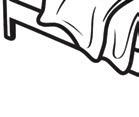





Create a continuous path of the words below using all the letters in the grid. Start at the highlighted ‘T’, and end at the highlighted ‘E’, move horizontally or vertically
‘Movies’ BY Luana v. OranJe

EDITOR: MANRAJ GILL




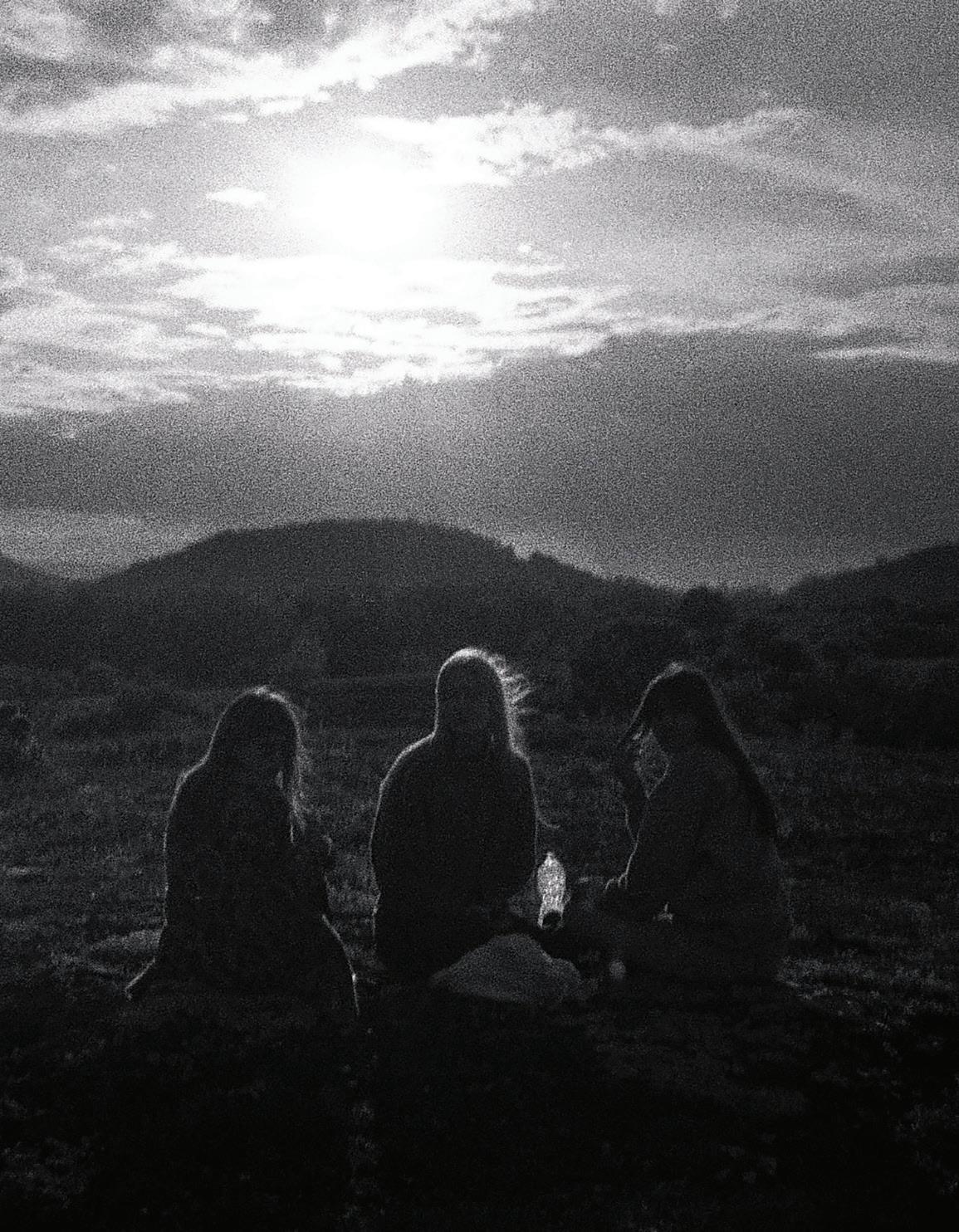

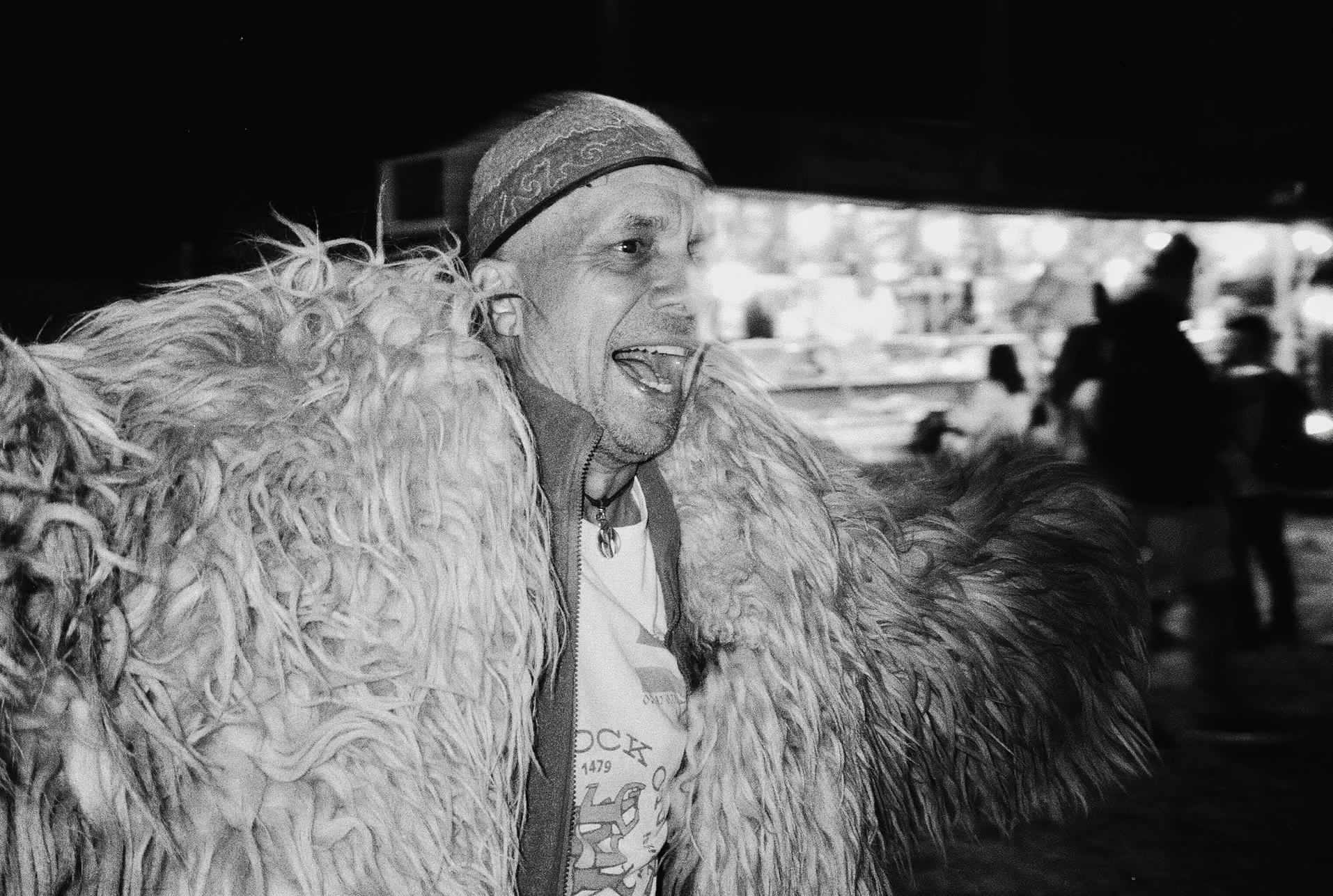
MANRAJ GILL
Photo Editor


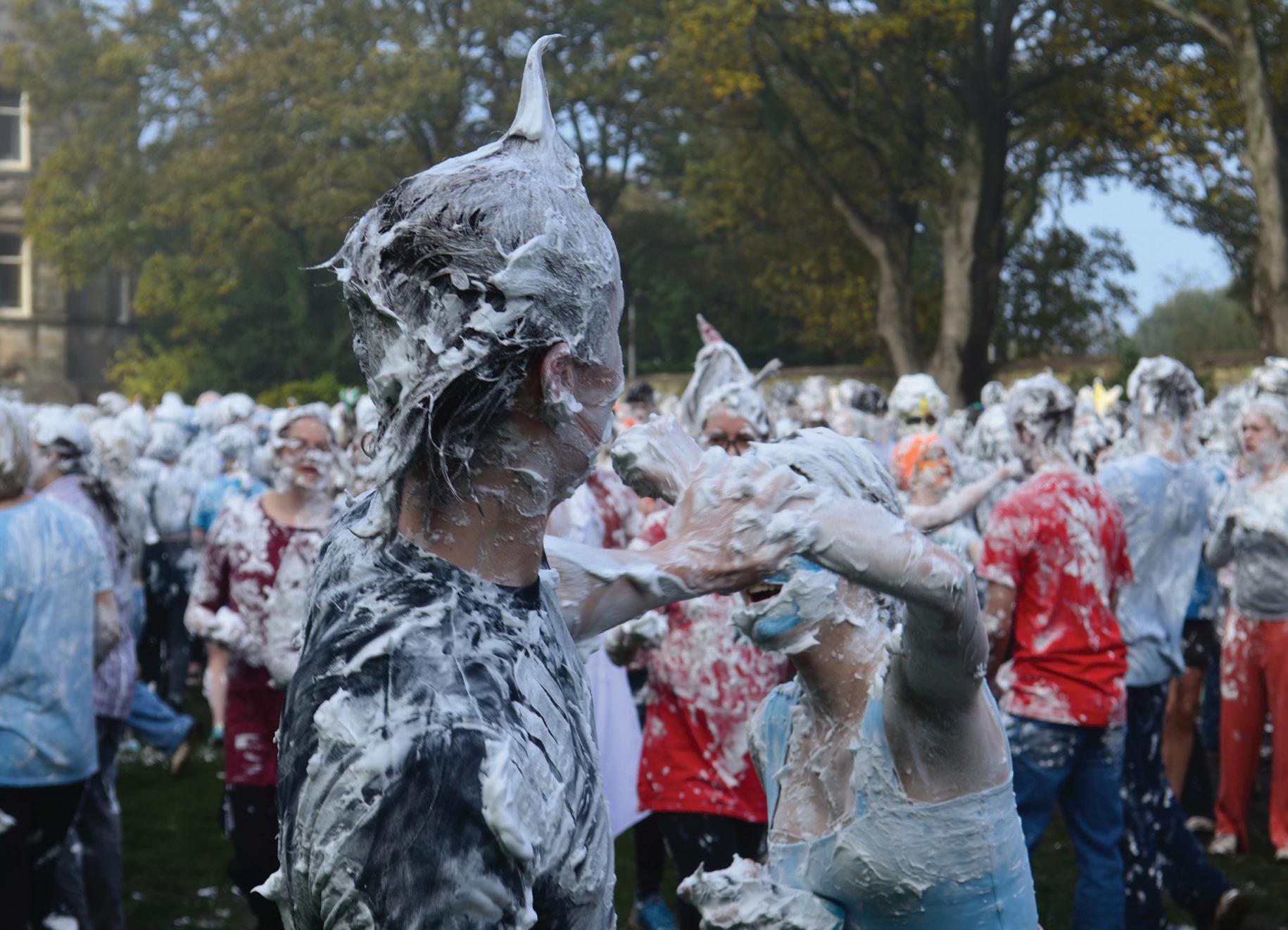

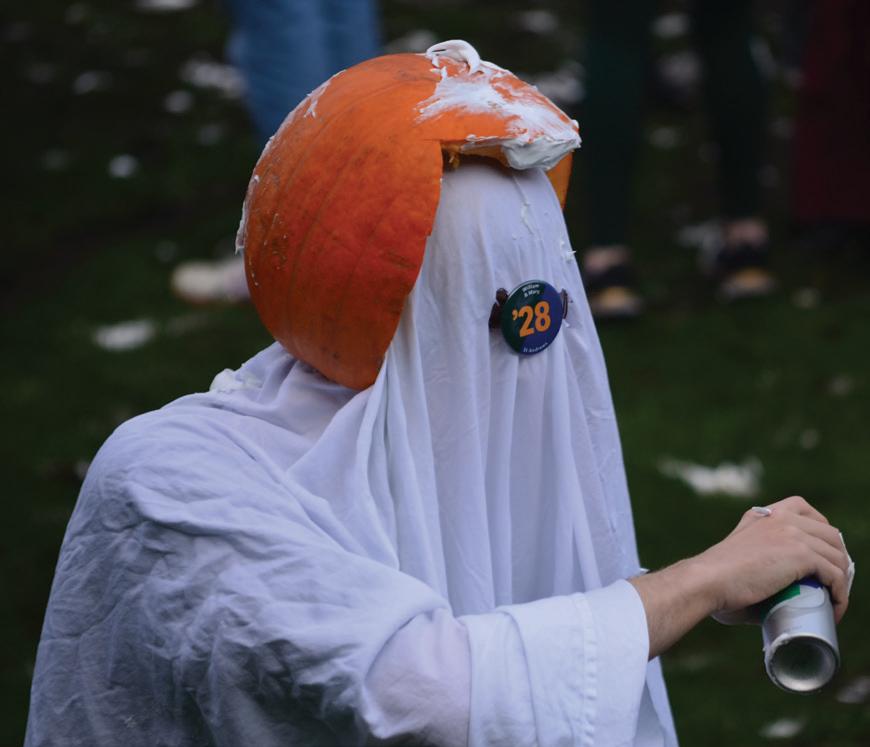



ALIX RAMILLON ReLic Writer
BY AGNES BRENNA
My last night in Oslo, I borrowed my mum’s apartment and invited over my (mostly single) friends whom I knew I would miss dearly. We gorged on red wine, snus, and gossip till morning, repeating the same stories for the thousandth time — psychoanalysing old flings and weird sexual experiences.
Romance novels are traditionally linked to the trivial, the mundane, to be made fun of as cheesy, but they are inherently political in the way they deal with love. They portray female self-fulfilment as a reward for longing, rather than giving into their urges, made clear through the achievement of stability through love. In a way, they are written to comfort women by domesticating desire. Where romance ends in resolution, safety, marriage, and tidy arcs, erotica lingers in tension and uncertainty. How many women in romance novels are so irremediably written for men, even by women? Think of One Day or Normal People — if they decide to live their lives, they are punished (spoiler alert), end up miserable or die when they achieve love or have to suffer to get the ultimate goal. In Friends, Rachel has to abandon her dream job going to Paris to end up with Ross. The way the female protagonists in romance movies always have to be flawed or need to have character development — they are initially confused, selfish, forgetful and better themselves once they settle for love Erotica, on the contrary, suggests women will save themselves through desire and curiosity. It is literature that lets women be whole and move away from the categorisations, from the spectrum of purity culture to porn culture. Let me be clear: When I talk about erotica, I’m not referring to Wattpad stories. I’m referring to how, in feminist circles, a literary approach of desire through erotica can question our links to creativity and our inner selves. Jung called eros “the principle of psychic relatedness” — the force that makes life feel alive. Without it, we go numb. In fact, most women misunderstand eroticism entirely. We’re conditioned to think it’s about sex, or something to be commodified, but eroticism isn’t about sex at all; it’s about power, and how we relegate our inner senses to meaning, creativity, beauty, and our unknown natural instincts (I would recommend reading Women Who Run with the Wolves).
lineage, or spiritual leadership). As sex was not separate from the divine, nudity then was not condemned as obscene or blasphemous with ties to Christianity, as in Sade’s The 120 Days of Sodom. In Nymphomaniac by Lars Von Trier, for instance, his Sadean journey transgresses the misconceptions of nymphomania and is unsettling, as the visual experience moves sensuality and desire beyond the prosaic limits established in the normative society of the Madonna/ whore complex. It is not about exhibiting a shameful, repressed sexuality but asserting pleasure for the sake of pleasure.








How do we know that what we desire, when attained, will be fulfilling? Desire suggests its object will provide a sense of eternal oneness, the merging of two half spheres under Plato’s Symposium. In Eros the Bittersweet by Anne Carson, the realisation that it is not the finding and fulfilling of our desires that makes us human, but rather the puzzling discovery that, upon fulfilment, you peer in and find that there’s still a hole. Carson states: “The words we read and words we write never say exactly what we mean. The people we love are never just as we desire them. The two symbols never perfectly match. Eros is in between.”
The friend group has expanded over the years, but is still pretty consistent; most grew up in the same city, went to the same schools, and know the same people. Semi-insistent on never lowering our standards or eating each other’s leftovers, our sea of eligibility has thinned, turning plenty of fish into a few, giving the gossip less romantic fuel than it used to have. After repeating my same sad eating-mouldy-cereal-with-my-one-night-stand story, my friend sighed in boredom and exclaimed, “Fortunately, you’re heading to a new city to give us some new material.”


Historically speaking, erotica foregrounds bodily pleasure and agency, offering women a textual space to claim economic, sexual, and intellectual independence and is linked to literary traditions such as courtesan autonomy or libertine memoirs. It fits into the part of the desire that can’t be explained or excused through a moral lens. Delta of Venus by Anais Nin treats sex as something beyond empowerment with the idea of pleasure as a philosophy. It is not radical through sex, but the honesty of women’s desires because it provides an ode towards how women partook in their sexuality, as it wasn’t always shameful. In ancient Sumeria, erotic rites were part of spiritual life, where nadītu— priestesses— were autonomous and sexually active women. They were economically independent, and their bodies were not scandalous. Women held erotic authority through many mediums (such as dance,








In Written on the Body Winterson offers a version of love that revels in







Written on the Body, Winterson offers a version of love that revels in physical minutiae and imperfections to ask the question of how well we can know another through their body.

the question of how well we can know another through their body. and protagonist through power dynamics, may it
isn’t about sex at all; it’s about power, and how we beauty, and our unknown natural instincts (I would write people we love are never just as we
On my first proper going-out day in St Andrews, I was yearning to make my friends proud. I looked through my suitcase, filled with small, slutty tops I had thrifted and cropped throughout the years, and landed on a transparent purple one, barely covering my nipples and belly button. I paired it with a denim skirt and went to the pub with my new friends, but ended up feeling self-conscious, realising that the top I got away with in the dark clubs and living rooms of Oslo suddenly looked aggressive, as if my exposed cleavage went from cheeky-classy to screaming for attention. I felt like a millennial missing the mark of trendiness, surrounded by hotties wearing stripey long scarves and sweaters. The men I did manage to talk to in my nakedness were usually 60-year-old golfers, gays or freshers — bad contenders for overseas gossip, no matter how juicy it would be.


In an anthology of short stories, the narrator is unnamed, and what remains are the parts of the body and not the relation of the protagonist through power dynamics, may it be race or class. Girls are objectified with their bodies and fed with erotic content before they even realise what desire is like, and it shapes the collective imagery. By not assigning the object of desire through a gender, she explores how close we can come through adoration and physical intimacy with another person. In a culture that promotes hookup culture and casual sex to the point of desensitisation, erotica needs to be genderless for women to partake in more confident practices. In her ‘Poetics of Sex,’ she explicitly revives Sappho’s lyrical perspective to celebrate a lesbian body, using intertextuality to position Sappho’s poetry as a foundational feminist erotics. From her to Anaïs Nin’s bravery with a blunt, witty and honest style combined with imperfect, morally grey protagonists, they foreground women’s interior sexual consciousness, blending literary style with explicit desire. Unlike the romance of conventional novels, Nin’s work treats erotic encounters as sites of self-exploration rather than plot devices that serve a male-centric love arc.

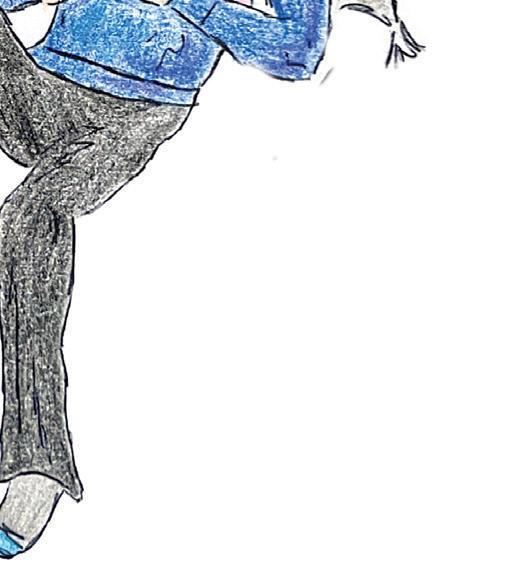
The following pub nights, my flirting missions continued to fail, and my outfits seamlessly turned more modest. I learnt that fellow students were changing their Hinge locations or going away on the weekends for hook-ups and situationships. Too lazy for such efforts, I became anxious about returning home with nothing new to tell.





































Then, last Friday, I met a man. He had the classic look of a man who would f*** me and then f*** me over in Oslo, quite beautiful and extremely arrogant. As I stood talking to him, I looked over at my friends’ table in the corner, cheekily peeking over at us, giving a rather lame thumbs-up. Their stupid reactions made me laugh way more than anything this man had to say, and it hit me; the validation I’d been chasing left me talking about the politics of computer science while my friends were simply having fun.













even realise what desire is like, and it shapes the object of desire through a gender, she at my friends’ table in the corner, cheekily peeking over at us, to say, about the politics of computer were Now I am in no way refreshing celibate, capacity friends. At least that’s what I’m telling myself, since selfimprovement temptation.






































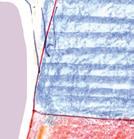
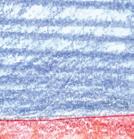
















Now I am in no way reformed, but it has been refreshing to be loveless and celibate, with all the time and capacity in the world for new friends. At least that’s what I’m telling myself, since selfimprovement is easier without temptation.



























Looking for your next read? The Saint and Topping & Co. have come together to save the day. Find below the best horror novels. All books are available locally in store.


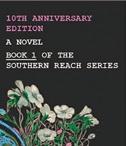


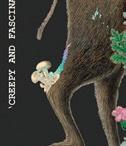




Murray recommends... Annihilation by Jeff Vandermeer



“Some questions will ruin you if you are denied the answer long enough.”
Annihilation follows four women as part of an expedition to explore ‘Area X’, a region shrouded in mystery and grief. The story is the field journal of a biologist as she comes to terms with both the region and her part to play within it. While this book contains traditional horror elements, the true terror lies in the psychological atmosphere of this book which brings with it so much fear and an unsettling reflection on identity. The writing style masterfully asks questions on the relationship between humans and our natural environment through this ecological-horror lens.

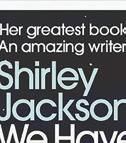

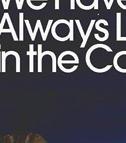
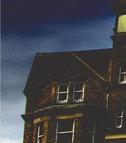







Mikey recommends...
We Have Always Lived in the Castle by Shirley Jackson
Though Jackson’s horror classic The Haunting of Hill House tends to get more attention this time of year, her 1966 novel We Have Always Lived in the Castle is an unforgettable masterpiece of twentieth-century gothic writing. In the utterly singular voice of protagonist Merricat Blackwood, the novel follows two sisters and their uncle living on the outskirts of society in an enormous house, comfortable in their isolation until it is disturbed by the unwelcome arrival of their cousin Charles. I read this short novel in just a few hours, but it has reverberated in my mind for years since.
Alix recommends...


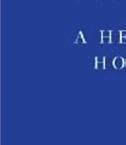






The Empusium: A Health Resort Horror Story by Olga
Tokarczuk

A feminist and gothic reworking of Thomas Mann’s The Magic Mountain, which features a mysterious series of supernatural, bloody, ritualistic murders, amidst discussions of chauvinism, The Empusium is perfect novel for horror in terms of atmosphere. Tokarczuk inspires herself from Grimm’s fairy tales and medieval Gothic with a dash of Greek myth. In September 1913, the young engineering student Mieczyslaw Wojnicz has just arrived at a sanitorium in Görbersdorf in the Silesian mountains (then part of Germany, now in western Poland), where he is to be treated for tuberculosis. Omniscient mythical female entities bear witness to the machinations of poor misguided humanity from on high throughout the story. The Empusium shows that there is a fascinating duality in Tokarczuk’s grasp of the world of horror. By exploring mythos and logos, the liminal and the defined, this novel renders justice to the genre of horror and the supernatural, perfect for a Halloween read.
SOPHIE LYNN ReLic Writer
Somewhere between the ancient forest and the iPhone screen, a new kind of old religion is taking root. Neopaganism (also known as modern/ contemporary paganism), which is defined by Oxford Languages as “a modern religious movement that seeks to incorporate beliefs or ritual practices from traditions outside the main world religions, especially those of pre-Christian Europe and North America,” is experiencing something of a renaissance, although not in the way its earliest revivalists might have imagined.
To understand how the modern neopaganism revival came to be, it’s worth looking for a moment at its history. While often imagined as an unbroken continuation of ancient, pre-Christian religious traditions, what we now call neopaganism can be understood as more of a modern construction.

neopaganism’s ongoing renaissance has been the rise of social media, where the movement has found both unprecedented visibility and new challenges.













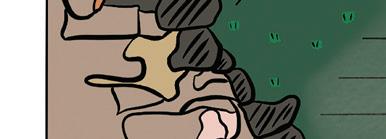




In the 19th and early 20th centuries, a wave of interest in folklore and the occult swept across Europe, and writers, mystics, and professional and amateur scholars sought to rediscover what they believed were the spiritual traditions suppressed by Christianity. These efforts weren’t always about historical accuracy, as much of the “ancient wisdom” being revived was speculative, fragmented, or entirely reimagined. Rather, what mattered more was the sense of connection to a pre-industrial worldview that was often romanticised, and was likely part of a subcultural reaction against the movements of industrialisation and secularisation happening in the world at that time.
In the mid-twentiethth century, neopaganism began to take more organised forms, with movements like Wicca emerging as some of the most wellknown iterations. These early neopagan movements combined elements of folklore, ceremonial magic, and nature worship into structured practices and rituals that emphasised a sacred relationship with the Earth and its cycles. Wicca introduced the idea of seasonal festivals and rituals honouring a divine masculine and feminine, which helped shape the framework for many neopagan traditions that followed. These traditions gained increasing cultural traction during the New Age movement of the early 1970s, when a broader fascination with alternative spirituality, mysticism, and holistic living swept through Western societies. However, perhaps the most significant catalyst for
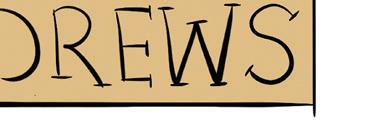
Scroll through your “For You” page on TikTok or Instagram, and you might encounter tarot readers offering daily card pulls, posts advertising the services of ‘Etsy witches,’ or videos showcasing crystal collections and altar setups. This kind of online culture has made neopagan practices more visible than ever before, and for many young people, especially those feeling disconnected from traditional religious institutions, these digital spaces can provide an alternative way to explore spirituality. Yet the rise of social media as a platform for neopaganism is a doubleedged sword. While it offers unprecedented access and community, it also flattens and commodifies complex traditions into bite-sized, aesthetically pleasing content designed to capture attention in the endless scroll. This can be dangerous, especially as much of the neopagan content circulating online is highly eclectic and often self-curated, drawing from a patchwork of myths, historical fragments, and modern inventions. This tension between historical authenticity and modern invention is ever-present. Unlike more established religions, neopaganism often embraces this fluidity, valuing personal experience over rigid orthodoxy. Still, this openness sometimes leads to confusion and criticism, raising questions on whether these evolving practices are all genuinely rooted in spiritual exploration, or are they mostly curated performances shaped by algorithmic trends and market demand?
Here in St Andrews, where the town boasts at least a thousand years of religious history, this digital revival of pagan spirituality adds a new layer to the town’s already complex spiritual landscape. The influx of young students, many drawn from diverse cultural backgrounds and digitally connected worlds, has brought new spiritual explorations into a town long defined by its Christian heritage. For many, social media is the bridge between the old stories of the land and the new stories they are writing for themselves. As Halloween approaches, a time rooted in ancient pagan festivals and now marked by a blend of secular and spiritual observances, these digital expressions of neopaganism feel particularly resonant. They remind us that modern spirituality is not static but constantly evolving, shaped by the technologies, cultures, and anxieties of each new era.
Illustration by EVe FishMan
JONATHAN STOCK ReLic Writer






When I listen to Celtic music, I find my emotions veer towards melancholy. The most upbeat jig can miss a note you feel should be there, leaving you alone in the very absence of it. Celtic music abandons the rhythmic and harmonic suspensions characteristic of most Western music, and so can sound alien, or perhaps more aptly put, otherworldly. It has properties that no other musical culture possesses, and a particular obsession with death, loss and hardship.



























was written. When I am sad, I listen
ILARIA FRECCIA Editor-in-ChieF



from the first invasions of the islands to the expansion of the British Empire and its hellbent campaign
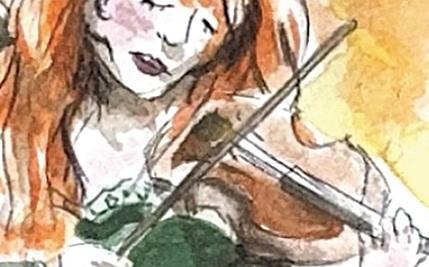


languages, the horrors that have punctuated the histories of the Celtic nations over the last 2,000 years have been akin to apocalypse. Of course, the music of these cultures reflects its near-constant oppression — the many lost to the fight live on through the delicate voice, the hum of the fiddle and the breathlessness of the Celtic drum.

delicate voice, the hum of the fiddle and





from the stuffy Anglo-Saxon custom, from the stiff-upper-lip to a loud and drunken brawl, full of music and facing death headon. The traditional Irish funeral song, the ‘amhrán na marbh,’ is a melancholic melody most often sung in the Irish language. The rites performed at death are inherently musical. In the Christian context, the funereal song honours the blurring of boundaries between heaven and earth, life and death.





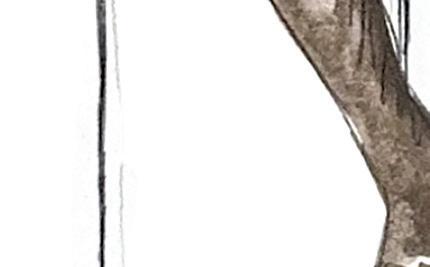









“Who could blame me, crying my fill?” Muireann Nic Amlaiobh asks in ‘Johnny Has Gone for a Soldier,’ a song lost to Ireland and rediscovered in America. The retranslated melody narrates the life and death of Johnny’s widow. The song is also about homecoming, and through collective memory and care, it returned to Ireland 200 years after it was written. When I am sad, I listen to Amlaiobh’s album Foxglove and Fuschia to wallow and truly feel it. For Celtic and trad musicians, depression is just as worthy and important as the happiest moments of human life.

Your typical Celtic ballad’s tragic inspiration might seem obvious;

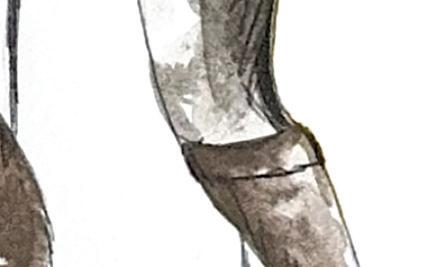
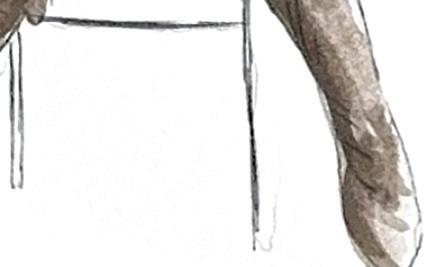

against our native

Recently, I’ve found my ‘daily scroll’ populated with a large number of stories about Trisha Paytas’ role in the new season of Euphoria, Kylie Jenner’s singing debut, and Charli XCX’s upcoming movie debut. These celebrities are already blessed with beauty, wealth, and incredible talents — why can’t that be enough?
Being an influencer is a career that requires a certain degree of talent and charisma — of that I have no doubt. However, does posting a twenty-minute YouTube video vlogging your day, or memorising three lines from a trending audio, require the same level of talent as acting in a film? No.
The world is becoming increasingly digitalised and, as a consequence, increasingly revolving around social media. Followers are a form of currency — for the influencers themselves, and for production companies. New series like The Secret Lives of Mormon Wives originated from and largely revolve around social media.
One might conclude this article here: Celtic music is sad and full of death because Celtic history is sad and full of death. However, these tunes personify sadness in a way that transcends their earthly context. Inspirations such as the death of a lover, or the loss of a son in war, does not signify the end of life, but the beginning of their journey towards existence on another plane, whether that be Christian or pagan. Celtic culture has always cared deeply about the human spirit and its journey onwards, and in music, it is a journey that never ends.

and full of death. However, these tunes but on another plane, whether that be always cared deeply about the human

“Depression is just as worthy as the happiest moments of human life.”







Captain Edward Burt, in 1726, Scots like this: “The upper class hire women to moan and lament (keen) at the and now and then break out into a hideous howl and Ho-bo-bo-bo-boo; as I have

But the increasingly capitalistic nature of the entertainment industry, and all adjacent industries like beauty and books, is coming at the cost of good art. In watching Trisha Paytas in Euphoria, like watching Kim Kardashian in American Horror Story, there’s no character; I’m simply having the jarring experience of watching them try to act. Think of it this way: if I were a GP, I wouldn’t try my hand at dentistry just because they both fall under the same heading of medicine, so why should art be a profession open to anyone to participate in? Stick to the TikToks, please.
I have no problem with influencers or celebrities starting skincare or clothing lines. They don’t need to, certainly, and it’s once again a commercialisation of the entertainment industry, but it’s not hurting me. In fact, some celebrities have created great products — for example, Rare Beauty by Selena Gomez emphasises affordable and accessible products, and Skims by Kim Kardashian has done massively well in the fashion industry. But these lines are relevant — Selena Gomez has lupus, an autoimmune disease that can cause weakness in hands,
Songs like ‘The Parting Glass’ represent Ireland’s profound respect for the dead and dying — in the Celtic world, one cannot be allowed to die without dignity. These melodies defy the passing of time and the loss of loved ones to oblivion. The vein of sadness that runs through Celtic music, from ‘Danny Boy’ to ’The Fields of Athenry,’ is a vein that runs through all of our lives. The music speaks of the worst times and softens them. It is an art form without fear.
CleMMie SwiFFen


Captain Edward Burt, in 1726, described the practice of the highland Scots like this: “The upper class hire women to moan and lament (keen) at the funeral of their nearest relations. These women cover their heads with a small piece of cloth, mostly green, and every now and then break out into a hideous howl and Ho-bo-bo-bo-boo; as I have often heard is done in some parts of Ireland.” coronach, is transformed
The wake, or the

leading her to design a product that fills that niche. And for Kim Kardashian, famous for her hourglass figure, creating a shapewear line is a natural extension of her personal brand — acting is not.
This doesn’t just apply to the entertainment industry, however — there are far more dangerous games at play. A video recently went viral of American fashion influencer Brittany Xavier explaining why she doesn’t give her children Tylenol and keeps acetaminophen in the house in case of an emergency, which, she defines as her children having a 105F degree (that’s 40C) fever. First of all, if anyone has a fever of that temperature, they should go to a hospital immediately. Second of all, acetaminophen is the active ingredient in Tylenol and buying a generic or brand-name product should do the same thing. Third, it is so dangerous for influencers with no form of medical degree or background to be giving out information like this on the internet. Please, for the love of all that is good in this world, stick to fashion. There’s enough misinformation in this world without a fashion influencer deciding to stick her two
cents into politicised medicine conversations.
This isn’t to say that all public figures should be strictly confined to their particular niche. Plenty of celebrities have broken into other areas and been good at it — the EGOT exists for a reason, and has been won by many very deserving and talented people. Pharrell Williams pivoted from a music career to become the Louis Vuitton Men’s Creative Director, and Addison Rae has built herself a highly successful music career, along with nearly every Disney Channel child actor (for the sake of this article, I won’t touch that particular niche of performer). But for the most part, these are the exceptions.
The most successful people in their fields, the Meryl Streeps and the Beyoncés, have stuck to what they’re good at and built respect from inside and outside the industry for their talent, commitment and dedication to the craft. Let’s preserve the sanctity of art and entertainment and reserve our praise and attention for those committed to the craft, who work hard and develop talent, and appreciate their work. So I say, to all the influencers and actors and everyone else, stick to your brand and please, stay in your lane.
SOREN RASMUSSEN ReLic Writer
On the night of 30 October 1938, Martians invaded the United States. It began with reports of strange explosions on Mars and an unknown object crashing on a farm in New Jersey. From this object, a giant tentacled creature emerged and killed 40 residents with a heat ray. The state deployed a militia, but they too were no match for the creature. As more Martians landed, the aliens conquered New Jersey and stormed New York City, killing residents with a wave of toxic smoke. New York fell, and the rest of the world followed.
At least, that’s what the radio said.
Here’s what really happened: on 30 October 1938, a fake news story frightened an entire nation. At 8pm that night, Orson Welles and his company of The Mercury Theatre on the Air performed a modern adaptation of H.G. Wells’s novel The War of the Worlds. To heighten the realism of their performance, they told the story through a series of breaking news updates and ‘live’ reporting on the ground. Audiences began by listening to an orchestra broadcast but were interrupted with news of the events on Mars, then New Jersey, then the wider invasion. While the program identified itself as a performance at the onset, many listeners
tuned in after the fact and believed the news of interplanetary war. Across the nation, panic spread; reports came in of suicides, riots, and mass madness as people everywhere fled their homes. One listener reportedly died of a heart attack during the broadcast. A handful of voices on the radio had cried wolf, and the entire country had believed it.
At least, that’s what the newspapers said.




Here’s what really happened: on 30 October 1938, the newspaper industry saw a chance to discredit their nascent competitor in radio, which was stealing the industry’s ad revenue and











their headlines declared it a national crisis. A smattering of gullible, frightened citizens became a story of coast-to-coast hysteria, a disaster manufactured by the press.















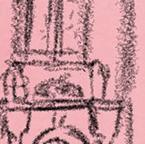






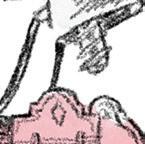







MARI CLAUDIA REIMER ReLic Writer
In adulthood, there are only three times you are ever really naked: taking a shower, in between getting undressed and dressed, and having sex. For something so natural, nakedness has always felt forbidden to me; I come from a prudish, conservative family where bodies are rarely openly acknowledged. So for my mother, trying to understand why I attend life drawing every Tuesday is a difficult concept. She pleads with me to draw people who wear clothes instead.
One night on FaceTime, after accidentally flashing sketches of naked people on my desk, my mother declared, “Promise me you’ll never be a nude model at that school of yours.” Being the youngest of four girls, I got away with a lot. My parents were worn out by the time they got to me: not having a physical baby book, baptising my sister twice instead of me, and, from time to time, leaving me at places. Their nonchalance extended to not imposing many rules







endangering their monopoly on the news. So when papers began receiving calls asking if there was any truth to a broadcast claiming Martians had stormed the East Coast, the industry saw its chance. The next morning,





there was any truth to a broadcast claiming Martians had stormed the East Coast, the


when it was just me in the house after my sisters had long since moved out. When a rule was made, I always broke it. So, of course, I signed up to be a nude model.
My relationship with my body is not particularly unique: for the majority of my life, I didn’t think much about it. I always ran naked through the halls of our house and back garden with my pink rain boots on, holding onto that childhood ease when your body just is
But like so many girls, I felt the shift in my attitude towards my figure when it started to change in my mid and late teens. However, it wasn’t weight that poisoned my self-image; it was quiet comparisons of what our bodies are supposed to grow into.
As a result, I couldn’t show my body to anyone in high school. I hated being touched and kissed in the light of day. Once, I made a guy kiss me in his dark closet on his pile of unfolded school uniforms with a belt protruding into my back. It was this over his bed, which was illuminated by an immense amount of light from his windows. I did not want him
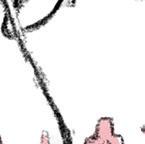























of course. Welles and his did people did hear the














their lives were in peril. But there was no deaths — the report of the heart attack

At least, that’s what the historians said. By now, you’ve probably caught on. What happened on that night exactly 87 years ago is encased in so many nested mythologies that a single truth is impossible to find. There was no alien invasion, of course. Welles and his company adapt The War of the Worlds to bring Martians to New Jersey, and some people hear the broadcast and believe their lives were in peril. But there was no mass hysteria in the streets and no confirmed deaths — the report of the heart attack was never verified. The panicked citizens were most likely few and far between. The


narrative of a nationwide panic could have been a plot by newspapers to fight radio encroachment, but no hard evidence of this exists, and the story could have simply justified a few eye-catching headlines. Some journalists may have even believed there was a crisis, since those who panicked did often call local papers for answers. But whatever truth exists is buried in a desert of myth. In the end, the only real story is the need for a good one. Welles and his company only adapted the novel to improve their play, since a good story is one that an audience believes. They certainly succeeded at that. For the newspapers, whether they saw it as fact or fiction, a whole nation screaming the Martians are coming is a better story than a sprinkling of impressionable listeners. They succeeded too, as the story of the broadcast has become shorthand for the fear-mongering power of the media, to be retold in psychology textbooks and lecture theatres. As for the historians and journalists today who claim the whole mania was an invention of the papers, isn’t that just another parable on the press? Beneath all these layers of myth may be nothing more than Welles himself, the magician conjuring up the invisible, winking as if to say that we’ll keep creating our own Martians as long as there’s someone to listen.
Illustration by Alice O’sulliVan
to see me with a shirt off. At seventeen, I was the least confident person I knew. Not much shifted in my perception of myself when I entered St Andrews. I just learned how to pretend to be confident and not care when taking my clothes off in the presence of a man, or look the other way in front of a full-length mirror. It was easier to avoid my body altogether than think about it.
I signed up to nude model not just to defy my mother but also to confront and get over my own issues. I spent two weeks sleeping naked, walking around my room naked, and replicating naked poses from my Pinterest in my mirror, getting familiar with a part of myself I had never truly known. I had never been naked in the company of my own presence so much before, and I started noticing the small details of my body: how my left hip curves slightly more than my right and how my chest is layered with more freckles than my face.
On 1 April, I walked down South Street in a trench coat with nothing underneath. However, I was not entirely naked when I dropped my trench on stage in School
VI. I wore my black flats, beaten up from tripping all over the cobblestone in this town, and a pearl ribbon necklace. I went, I posed, and I almost fell asleep with my legs dangling in the air, my hands beneath my chin on the couch. I wasn’t thinking about my body. I wasn’t listening to the music the live performer beside me played. I was just there. I was just existing. Afterwards, I went to St Mary’s Library (still naked under my trench) to finish an essay. Truthfully, I thought this experience would be something monumental in my life: this girl from Texas, finally learning to fully love and accept her body by boldly standing naked in front of so many people. But from what I learned, the spectators were not needed to accomplish this. All along, my body had always been loved.
After all of this, I can only summarise my experience of being a nude model in just a few words: I stood in front of 30 people naked. It was OK
ALEX BRUBAKER ReLic Writer
Just far enough out of town to make students groan at the walk, The New Inn isn’t many students’ first choice on where to spend a weekend night. Sitting in here on a late Tuesday afternoon, I may understand why. Nearly empty, apart from a few regulars and hotel guests, I recognise nobody else inside. Other pubs reliably have at least a few familiar faces any day of the week. Its location on St Mary Street, near East Sands, possibly keeps students away. Even though it’s only a fifteen-minute walk from my flat on City Road, the rest of the town’s nightlife, pubs, and restaurants are concentrated within a few minutes’ walk from my door. What the New Inn may lack in centrality, it definitely makes up for in friendliness. As I ordered my pint of Tennents (only £4.50 —
one of the cheapest by the town’s standards), Lewis, who was behind the bar, was already asking me if I was up to much today, what I was studying, and where I was from. This is not the most common experience in St Andrews. He and the other bartender, Iain, took turns manning the bar to throw darts. Regulars called them by name to ask for another round and chat them up.
If you’re not willing to make the walk out of town just to hang out with friendly bartenders, there is one night a week to come to the New Inn that I promise will make you a regular — Karaoke Fridays. By 9pm, the tables are cleared out to make a stage, groups have staked out their tables, pints are flowing, and requests are piling up. Lewis and Robynn, siblings who work at the pub, run the event, sitting next to their surprisingly professional microphone and speaker rig. In my experience with karaoke nights in other venues, the emcees
have a bored, over-it look from spending hours listening to drunk people singing off-key. At the New Inn, however, the people running seem just excited about it. “Lewis will cover the bar if Robynn and I want to jump in and sing,” says Iain. “‘Iris’ by the Goo Goo Dolls is my go-to.”
Iain explained that, on average, karaoke nights are the busiest of the week, with about 30-40 people getting involved. Most are local to St Andrews, there’s a regular group of about ten postgrads, and the rest are the occasional groups of undergrads. A karaoke night at an otherwise quiet, out-of-town pub is bound to draw some characters, and it surely does. Take Don, for example, who comes every week, sits in the closest booth to the stage, and judges the singers. He’s not afraid to be vocal about his thoughts, too — he once told me that my rendition of Beyoncé and Jay-Z’s ‘Drunk in Love’ was, “absolutely dreadful.” To be fair, it was
audacious to think that song was even close to being in my range. According to Iain, though, Don is really a lovely singer who was in a Swedish band. “If you buy him a Grouse, he might even get up and sing,” he says. Next time, I’ll buy Don that Grouse and see if he can answer for his words.
For all its obscurity in many towndwelling students’ minds, The New Inn is hiding one of the best nightlife experiences this town has to offer. It proves that a good night out doesn’t have to be about polish or flash; it’s about the people. Between easy chats with Lewis or Iain, Robynn’s enthusiasm and beautiful voice, and Don’s brutally honest critiques, karaoke night at the New Inn feels like being part of something local and authentic. Make the walk out there, go in with an open mind, and you’ll leave already planning your songs for next week.
EMMA INGRAM-JOHNSON ReLic Writer










too? Although not endemic to this corner of North East Scotland, the dinner party seems to have taken hold of this student population with particularly brute force. Is it simply the absence of clubs that leaves us with no other choice but to gather and stretch meal plans to the wee hours of the morning? With the plethora of over twenty pubs and bars as an alternative to a black-tie dinner in your best friends’ flat, I think not.










The dinner party is a quintessential part of the St Andrews student experience. Myriads of flats piled on top of one another, interlaced and rarely soundproofed, are filled to the brim every night of the week with students dining on gourmet food en masse. Jazz filters in through the background, candlesticks are artistically placed in disused wine bottles, foie de gras and intricately iced desserts are scattered across tables, and fire doors, much to the chagrin of HMOobsessed landlords, are propped open by rocks collected from the beach. Preparation is hidden. The bright minds of St Andrews have thrown their windows open to smoke out of them, releasing the sounds, smells, and sheer superiority of the students inside to passersby below.












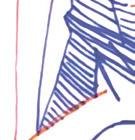

What is it






In my experience of visiting other university towns, this is not the average comingtogether of a weeknight evening. What is it that inspires us St Andrews students to cultivate not only an elaborate dinner menu but the drapery and atmosphere to accompany it,
seamlessly into the next. Their guests take on the role of badly behaved toddlers admirably. Despite this potential for bad behaviour, dinner parties have a monopoly on the cultural and aesthetic consciousness of St Andrews students. Rather than bringing this tight-knit community together, it may be more apt to say that they have been reformed, in classic St Andrews fashion, to fit the students’ elitist needs.






to cultivate not only an but the drapery and







that encourages
























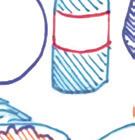
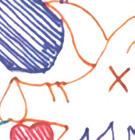




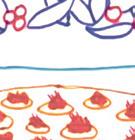





Perhaps it is the aestheticallydriven nature of St Andrews that encourages such















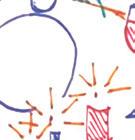
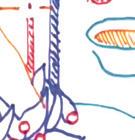





























been a form of high culture: it is obvious then. Like Roman Emperors and their is a form of cultural managers of school make


communal, artisanal dining. The singular beauty of the wind and rain-beaten cliffs is ingested as students hurry from seminar to lecture to, inevitably, dinner party, and then regurgitated back in the form of ridiculously specific themes and personalised place settings. It is a natural consequence of living in such an isolated, appearance-oriented place; we cannot help the progression from simple shared meals to Great Gatsby levels of dinner party dedication. It is true that communal eating has long been a form of high culture: it is obvious why it has evolved so quickly in St Andrews, then. Like Roman Emperors and their entourage, stretched out on three benches around a central food table, students in St Andrews have created a haven for esoteric ideas about what it means to be a student. Hosting is a form of cultural capital and social status. The hosts, power-mad stagemanagers of school plays, attempt to make their laborious dedication look effortless and for one ‘act’ to flow
















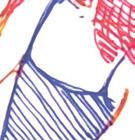












This pessimistic view ignores the sheer, innocent joy that eating together can bring to a group of people. Potluckstyle parties are a constant, and the communal act of creating one cohesive meal together as well as eating together is a double joy. For the students less concerned with Haus of Horrors in 601 and more interested in genuine conversation and connection, dinner parties offer a happy medium. Although some St Andrews dinner events more resemble a Roman Emperor’s extravagance in communal dining, this rampant phenomenon stems ultimately from an innately human need to gather, particularly in the winter, when nights draw in and the outside world can be shut out. The chance to tell stories, to combine new groups of people, play games, test out new outfits, all while eating well, is not one that should be discouraged or turned down. Indeed, there is no end in sight for the supper party in St Andrews.
Illustration by RaMona KirKhaM
look effortless and for one






EDITOR: OLGA ALONSO BLANCO
WALT SCOTT Events Writer
In my humble opinion, the tradition of Raisin in St Andrews is important and honourable. It is a trial which each of us must undertake. On any other day of the year, the actions carried out are ones to be ashamed of, but for one brilliantly debaucherous day a year, they are necessary and fundamental to the St Andrews experience.
‘Twas the morning of 19 October. I was snug in my bed, dead to the world, and dreaming about this week’s philosophy syllabus, the comforting hum of Kant and Aristotle rolling through my subconscious like slow traffic on a Sunday. Suddenly, the door exploded open — no knock, no warning, just the sharp crack of chaos and the rank, syrupy stench of Jägermeister cutting through the air. It was only 4am, though time was already starting to feel less like a number and more like an impending threat.
They came in waves, my academic kids — the little monsters I had mentored, advised, and moulded into reasonable humans. Now they had turned into a pack of jackals, loud and fearless, eyes wild
with the kind of deranged purpose only undergrads on a mission can muster. I sat up, blinking, trying to remember which reality I was supposed to be in.
Before I could say a word, they descended, hands on my arms, giggles filling the room. There was no time for reaction, only acceptance. Curiosity, nervousness, terror, and excitement shot through me. A nappy.
A cape. A bald cap. Somewhere in my mind, the words “Captain Underpants” surfaced like a bloated corpse. I tried to protest, but it came out as a slurred mumble. Someone shoved a shot into my hand. Jäger. Or maybe petrol. It burned the same either way.
As a fourth-year student, I was supposed to be beyond this — lauded, even feared. I was a veteran who knew which halls to haunt and which parties to vanish from. But all that confidence was slipping away, dissolving into the fluorescent haze of too much alcohol and too little dignity. The room tilted, laughter echoed, and someone shouted something about destiny. I think I agreed.
By the time they dragged me out, I wasn’t sure if I was walking or being carried. Everything had gone viscous, sounds melting together, lights bleeding. I remember the hallway, the cold floor
under my bare feet, the cape fluttering somewhere behind me. Then nothing — just the faint taste of sugar and regret.
They brought me to the edge of the North Sea, its icy waves washing over me and stealing my bald cap as a sharp jolt of adrenaline coursed through my body. Stumbling up West Sands and looking down, I realised I was almost entirely naked — only a small cape covered the nape of my neck and the now mostly see-through nappy concealing the rest.
The wind hit like a slap, cold and merciless, cutting through whatever haze still clung to me. The sea was behind me now, indifferent and roaring. Ahead was the town, waking up, the grey light of morning spilling over the rooftops with a kind of smug serenity that mocked my entire existence.
West Sands stretched out behind me like a crime scene. I started walking, barefoot, each step grinding salt and sand into my skin. The nappy clung to me like a curse. The cape flapped weakly in the wind, a tattered banner of my own humiliation. Somewhere in the distance, a gull screamed, probably laughing.
The first signs of the common man appeared near the edge of town. Runners, bright and earnest, full of electrolytes
and purpose. They looked at me, then quickly looked away, shocked and horrified. One of them smiled uncertainly. I nodded, the kind of nod that says, ‘Yes, this is exactly how I planned to start my day, thank you for noticing.’
By the time I hit North Street, the shops were opening. I moved through the early crowd like a ghost from a cautionary tale, my skin tight with cold, my brain pulsing in slow, ugly waves. I caught my reflection in a shop window: pale, wet, nappy on, and the small red cape fluttering behind me like the last shred of my decency. A man reborn, in shame. People were staring now. Some laughed, some pointed, one old woman crossed herself. I kept walking, head down, muttering something about philosophy and the absurdity of existence, as if invoking Camus might grant me cover.
Indulgence and drink had been a strong theme of the day, and it was not even 8am; a long battle still lay ahead. Upon reflection I have come to the better conclusion that Raisin is a collective humiliation ritual disguised as tradition, yet amidst the chaos there arises kinship. Although maybe this is wishful thinking attempting to mask mortification.
MAYA DASILVA Events Writer
On Friday 24 October, Bonkers, one of Market Street’s most recognisable independents, went all in for Wear It Pink, the nationwide fundraiser for the charity Breast Cancer Now. I had the chance to stop by, chat with the team, and try a deliciously pink cookie. I was welcomed with smiles, balloons, and a shopfront transformed into a rosy celebration of solidarity. The warm atmosphere also served as a reminder that October is Breast Cancer Awareness Month. Breast cancer is the UK’s most common cancer, with more than 55,000 diagnoses each year and around 1,000 deaths every month. Bonkers’ Wear It Pink captured the hope of overcoming the impact of breast cancer by championing its fundraiser for Breast Cancer Now with infectious energy. Throughout the day, the Bonkers team hosted a bake sale stacked with pink (and non-pink) treats, face painting, a spin-the-
wheel game, a Jellycat raffle, and a table of awareness ribbons and small items to spark conversation and encourage donations. For the Bonkers team, breast cancer awareness is personal. One of their colleagues, Lorna, was diagnosed in 2021. Lorna spoke about how the information, advice, and
support she received from Breast Cancer Now made an enormous difference during an unimaginably difficult time.

The charity describes its mission as providing “support for today and hope for the future.” In practice, that means funding research into prevention, detection, and treatment, campaigning for earlier diagnosis and better care, and offering trusted information and one-toone support to anyone affected by breast cancer. Their aims are ambitious but clear: to support those affected by breast cancer by accelerating detection and
improving prevention. During the Wear It Pink event, Bonkers raised more than £2,500 for this impactful organisation.
What made Bonkers’ event quietly powerful was its “come when you can” openness. There were no speeches or schedules and no pressure to stay, just a steady flow of people dropping in, chatting with the team, buying a cookie, spinning the wheel, and adding donations. As midsemester deadlines mount and autumn sets in, it can be tempting to keep our heads down. Wear It Pink at Bonkers, however, was a reminder to notice the shops and people who keep this town warm, and to recognise that small acts, like buying a brownie or spinning a wheel, can support our neighbours during difficult times.
If you couldn’t make it on the day but still want to help, explore Breast Cancer Now’s resources, donate if you’re able, or simply shop locally when you can. Community is built through choice; on Friday, Bonkers made that choice easy (and made it pink).
Photo by BonKers TeaM
JOSS WILDGOOSE BULLOCH Events Writer
This town’s not what it used to be. Even by the end of Reading Week, St Andrews still felt like a cemetery — cold, quiet, and faintly judgemental. My mood wasn’t much better. I strolled down Queen’s Terrace to the Boys’ Brigade Hall, collar up against the wind, wondering if everyone had packed up and fled south for the winter.
I’d been handed a new case: the Celtic Society’s Annual Halloween Ceilidh. The advertising promised tartan, tradition, and unbridled Scottish spirit. In a town where most spirits come in bottles, I figured it might be worth investigating.
6:15pm. I arrive impolitely early — standard journalistic malpractice. The Boys’ Brigade Hall was the sort of place that smelled of dust and brought back uncomfortable memories of school assemblies. Union Jacks and faded flags drooped from the rafters, cobwebs doing their best to fill the gaps in the decor. By 7:15pm — fifteen minutes past the advertised start time — there were twelve of us; I counted twice to make sure. Some had gone for full face paint; another was dressed (I think) as a vagrant. The rest lingered at the edges, waiting for someone else to make the
first move. I sat down, ready to be impressed.
The Celtic Society tells a curious tale. Being 230 years old, they’re the oldest student-run society at the University. They run weekly Gaelic and Scottish country dancing classes — a noble pursuit, if not a particularly populous one. These days, the society survives on the quiet persistence of a small, devoted few.
I cornered a committee member near the entrance table.
“Thin crowd tonight?” I asked.
“About normal,” she smiled cheerfully. “We average twenty to 30 people most weeks.”
Despite being the elder, Celtic Society has always given me the appearance of the Caledonian Society’s scruffier younger brother — less polished, more honest. The rivalry runs deep. Both clubs share their roots in Regency-era partner dancing before splitting into distinct forms. According to Celtic, while reeling places far more emphasis on form and how the dance looks, Celtic’s dancers are there “to actually have fun.” It’s a noble sentiment — Caledonian’s reeling practices attract hundreds, with strict choreography and ball applications dependent on your diligently tracked attendance. Celtic’s gatherings, by contrast, feel more beginnerfriendly, messier, and far more human.
Several attendees cited Caledonian’s ‘cliquey’ culture as their reason for staying away, alongside suspicions that the reeling crowd was infested with “Americans who preferred the status of the society, rather than actually dancing.” I didn’t have the heart to tell them that half the room sounded like downtown Manhattan.
Bristol, and one man who swore he owned no phone and wrote exclusively on a typewriter. By then, I was beginning to understand why recruitment was tough. “It’s like a primary school talent show,” I wrote in my notes, “but with more sweating.”
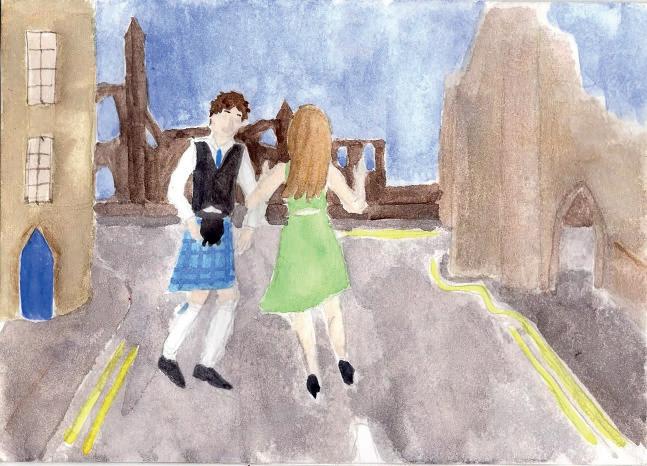
Despite initial appearances, the night did gather pace, rounding up to an even twenty attendees. The live band — to their credit — were excellent. The dancing wasn’t half bad either, but without alcohol, three hours of it felt more like penance than pastime. Between reels, I drifted between conversations: a pair of cowboys debating the Indonesian military, a tourist from
Halfway through, they held a costume contest. Some looked ready for the West End; others looked like they’d remembered halfway through brushing their teeth. I’d come dressed as a journalist — arguably the most terrifying thing in St Andrews. By 9pm, I’d had enough. I’d got the long and short of it, and I wasn’t about to risk hypothermia for journalistic integrity. As I stepped out into the freezing dark, breath fogging in the air, the band struck up another reel. Inside, a handful of dancers gallantly persevered. For all its awkwardness, the night had a kind of stubborn charm. £7.50 isn’t a poor price for live music, organised dancing, and a chance to win a bag of Squashies. If Caledonian represents St Andrews’ fantasy of Scotland – polished reels, champagne, and tweed – then Celtic Society might be its reality: scrappy, sincere, and determined to keep dancing, no matter how cold the hall gets.
MALI DELARGY Events Writer
Stereoscope Magazine, a student-run photography magazine and one of only a handful in print, is a much-loved operation. Their artistic vision brings historic Scottish photography out of the University’s extensive archives and into the light, making St Andrews a fresh space

for creative expression and innovation. From Sir David Brewster’s invention of the stereoscope to the bi-annual print of its namesake magazine, there is a deep vein of artistic richness still to be mined. When I heard that Stereoscope were throwing a launch party, I knew I had to be there.
The party began at 8:30pm on Thursday 16 October, so I gathered a few friends and located the venue: the flat above The Criterion. Flat parties hold a particular intrigue: the possibility of seeing inside buildings that are otherwise a mystery to passers-by, especially somewhere above a regular haunt. With this in mind, I greeted some familiar faces by the door, scavenged £7 for a copy of the new issue ‘Part,’ and eagerly climbed the stairs to the main event.
The evening would consist of a string of student bands playing in the front room. While the first of the performers was setting up, I took time to admire the decor. There was poetry everywhere, and torn pages of past issues were displayed across the walls. As the pile of coats and bags grew on the landing, it became the pedestal for a laptop playing a recorded poetry reading. As the room filled out, people mingled and cracked open their ‘BYOB.’ The moving bodies made the room hot, and
condensation fogged over the windows. The excitement was tangible. The band began.
The Herons came on first and were received by a passionate, spirited crowd. Everyone wanted to let loose and have fun, so perhaps it is not a surprise that the upbeat ‘Squishy Problems’ and ‘I’m so drunk and lonely I could go for a fag’ were strong fan-favourites. As their set finished, the party moved outside, and I caught band members Felix Saint Bris, Ben Bagley, and Ilya Husan for a few questions.
During one of their songs, Saint Bris fell (or jumped?) into the audience. The crowd were excited by the dramatic effect of this move, so I wondered whether it was pre-planned. Tongue very much in cheek, he confirmed that it was: “Plan really hard — that’s the spirit of punk.” Whether he was being serious or not, I suspect there is truth in his statement.
I posed the idea to Stereoscope’s editor-inchief, Matilda Kay. Ushering in a new era of the magazine by introducing excerpts from plays, films, and documentary submissions (with the plan to host more screenings and events), she spoke with me about the behind-the-scenes of the magazine.
“I think that a lot of creative stuff seems to appear out of the ether, and suddenly
you have this beautiful creative thing,” said Kay. “It doesn’t work like that, and it’s a bit of a fallacy about creative things. It takes a lot of work and a lot of manpower.”
As someone who already loves Stereoscope, I couldn’t help but feel inspired by Kay’s enthusiasm. She emphasised to me the importance of accessibility in forming a space of artistic engagement, aiming to have Stereoscope be a place of creative nourishment and support.
“We have such a great committee this year,” she said. “People who work hard, who genuinely care and love what we try to do with Stereoscope. It is something we make that people hold in their hands and see their work in, so it’s important that it’s done really well.”
Since our conversation, Stereoscope’s new mini-issue theme has been announced: ‘Machina.’ The submission deadline is midnight on 21 November. I greatly admire Stereoscope for their earnest devotion to art and creativity. Their work in creating an artistic space in St Andrews is much-needed and radiates great potential. And, from what I have seen, their spirit of dauntless optimism marks the beginning of a new creative era in St Andrews.
Photo by Mali Delargy

LOGAN SIBBALD Sci-Tech Writer
Around this time of year, when the leaves descend in fiery flurries and dusk creeps into the early afternoon, the smell of pumpkin spice begins to accumulate. Suddenly pervasive by mid-October and worn like a protective charm against the darkening days of the spooky season, the warming allspice aroma is adopted as the signature scent of the masses. Whether in perfumes, candles, drinks, or food, you will inevitably encounter the warming fragrance immediately evocative of cinnamon, ginger, nutmeg, and cloves. What is interesting in many of these situations, however, is that the smell sensations you experience are not a result of any of these actual spices. For example, many pumpkin-spiced reed diffusers and candles contain synthetic versions or chemical derivatives of the compounds found in the natural source. For cinnamon — which is derived from the dried bark of trees containing a naturally occurring chemical called cinnamaldehyde — the common replacement is a
synthetic form of the same molecule. Synthetic cinnamaldehyde can be produced at an industrial scale through the reaction between benzaldehyde and acetaldehyde. Since these are cheap and readily available starting materials, this method is more economical and less wasteful of natural resources than it would be to distill the essential oil from harvested cinnamon bark. The same rationale is applied in making nutmegand clove-like fragrances, where synthetic versions of the key scent compounds in the natural product are readily used. These fragrance compounds possess key chemical features that confer their scent properties, highlighting an important concept in aroma chemistry. The scent molecules for nutmeg and clove, for example, belong to a

class of chemicals called alkenylbenzenes, characterised by a six-carbon-atom ring with at least two extra carbon atoms added on. A similar motif is also found in cinnamon, though it differs slightly from the others by the presence of an aldehyde group, where a carbon atom has both a double-bonded oxygen atom and a single-bonded hydrogen atom. This tiny difference at the submicroscopic level amazingly allows the human nose to distinguish between the relatively similar aromatic profiles of cinnamon and nutmeg. The former gives sweet and woody notes, while the latter is more earthy. The science behind this subtle distinction is in how the unique scent molecules of the two spices bind to different combinations
BHANI KAUR Sci-Tech Writer
How
Imagine a world where your eyes are a camera, your brain is a screen, and light is the film that connects the two. For people with severe vision loss, that film has been damaged — the camera still exists, but can no longer send the images to the screen. Now, scientists have developed a new way to play the movie: a microchip that acts like a digital film reel, restoring the connection between light and vision.
At Moorfields Eye Hospital in London, researchers have successfully implanted a two millimetre wide microchip beneath the retina — the light-sensitive layer at the back of the eye. The device works hand-in-hand with a pair of augmented reality glasses that hold a tiny video camera. Together, they help people with age-related macular degeneration (AMD) — one of the world’s leading causes of blindness — regain partial sight.
In a healthy eye, light passes through the lens and hits the retina, where millions
of olfactory receptors in the nose — of which there are around 400 different types — in different ways. These receptors then send electrical signals to the brain, which processes the scent information. However, the finer details of how this distinction is made are unclear and representative of a larger puzzle in olfactory science. Indeed, it was only in 2023 that the first three-dimensional structure of a human olfactory receptor bound to a volatile fragrance molecule (propionate, which, in its acid form, smells rancid and vinegary) was deduced. Solving the structures of other receptors and their bound aroma molecules will be necessary for further exploring the science behind human scent. All things considered, hopefully the next time you stroll into a cosy local gift shop, with pine reed diffusers by the door and candle wicks flickering atop pools of orange wax, you will better appreciate the warm comfort provided by artificial pumpkin spice — the quintessential smell of autumn.
of photoreceptor cells (like the pixels on a camera sensor) convert it into electrical signals. Those signals then travel along the optic nerve to the brain, which projects them onto the “screen” of consciousness — our perception of the world.

wearer. However, since the eye’s normal communication route is broken, the implant needs help sending that information to the brain. That is where the glasses come in.

numbers, and many reported being able to make out shapes or detect motion again. The clarity is not perfect — parallel to an early black-and-white film rather than a 4K film — but it is life-changing.





the macula, leading to




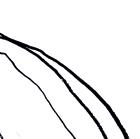





In AMD, those pixel-like cells begin to die in the central part of the retina, the macula, leading to blurred or missing vision at the centre of sight. It’s similar to trying to watch a film when the middle of the screen has burned out.

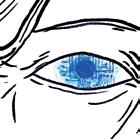





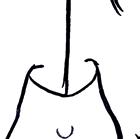





remain, but reading, then projected onto the retina activates the microchip’s electrical signals that the


Peripheral vision may remain, but reading, recognising faces, or seeing fine detail becomes nearly impossible.
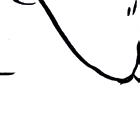

The new retinal implant replaces the missing part of that camera. The microchip — smaller than a grain of rice — has 1,600 tiny light sensors, each acting as an artificial photoreceptor. These sensors detect light coming from the world around the
The glasses capture video of the surroundings and process it in real time. The processed image is then projected onto the retina using infrared light, which activates the microchip’s sensors. Those sensors convert the light into electrical signals that travel through the remaining healthy cells of the retina to the optic nerve — and onward to the brain.
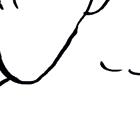











In other words, the glasses are the camera, the microchip is the film reel, and the brain is the projector that turns those signals into moving pictures of the world again.
So far, the results have been remarkable. In clinical trials, around 84% of participants regained the ability to read letters and
The technology also offers a window into the future of bioelectronics — merging living tissue with digital circuits. Engineers are already working on chips with higher resolution and wireless power systems, while neuroscientists study how the brain adapts to the new type of visual input. Over time, the brain may “learn” to interpret the digital signals even more clearly, sharpening the movie as the mind rewires itself. For people whose world has been fading to black, the idea of light returning feels almost miraculous. In many ways, this microchip does not just restore vision — it restores connection. It gives the eye a new film reel, the brain a new story to project, and the person a new chance to watch their life unfold in colour once again.
Illustration by RaMona KirKhaM
ISAAC OLDHAM Sci-Tech Writer
Halloween would not be the same without a chemist or two.
It is the night when the veil between the living and the dead is said to be at its thinnest. Around 2,000 years ago, the Celts, including those right here in Scotland, celebrated Samhain to mark the end of the harvest. Bonfires were lit and masks worn to confuse wandering spirits believed to slip through from the ‘other side.’Later, the Christians had their go, renaming 1 November as All Saints’ Day, with All Hallows’ Eve on 31 October and from there, Halloween was born.
Scottish and Irish immigrants then brought it to the US, where it transformed into the festival we know today. But behind the scenes of all the gore and glitter lies an often unsung hero: chemistry.
Whether you are dressing up for a night out in St Andrews, heading to the Union for fright night, or filming a horror short on the West Sands, it is chemistry that brings your zombie to life quite literally.
Back in Celtic times, people used natural materials like red ochre , charcoal, malachite, and plant extracts, creating face paints for
ritual disguise. That might have been primitive chemistry, but chemistry all the same.
By the early 1900s, makeup had turned into an art form. Thanks to advances in cosmetic chemistry, today’s Halloween makeup is safer, longer-lasting, and far more dramatic.
Aside from colour, your face paint likely also uses an emulsion, a water and

oil mix that prevents your creepy clown face look from budging all night long.
No Halloween in St Andrews (or anywhere else), however, is complete without fake blood or ghastly wounds, and again, chemistry takes centre stage. Realistic blood needs to flow, stick, and look like real blood.Chemists found that corn syrup or glycerin mimics blood’s viscosity. Add food-safe red dye, and you have got yourself a horror movie in a bottle.The perfect colour for fake blood comes from Red 40, a water-soluble synthetic dye that has also unfortunately made its way into many American food products. A recipe which reflects all of the desired characteristics is 1/3 cup of water to 5tbsp of cornstarch, finishing by adding a few drops of red food colouring.
On its own, Red 40 is too bright, so to make it more blood-like under harsh lighting, chemists add a hint of blue or green to darken the shade. That is colour theory in action.
Want to look like a desiccated vampire or peeling zombie? Then you will need latex.
Latex is a colloidal suspension of natural rubber in water. Once applied, it dries to form a thin, flexible film that moves like skin, absolutely ideal for burns, blisters, rotting flesh, or axe-in-the-head effects. For if you are amongst us allergic to latex, synthetic
options like neoprene exist, though they might be slightly less skin-like. So, whether you are heading to a party in Sallies Quad or filming a short horror on Lade Braes, latex is your best friend for believable gore.
Want to truly impress your fellow students? Use thermochromic pigments, that is, materials that change colour and form with heat. Apply them to a fake wound, and as you heat up from dancing in the Union, your wound will “bleed” or change colour in real-time.
So, while the Celts may have started Halloween here in ancient Scotland, modern chemists have taken it to a whole new level of horror and artistry. From the eerie glow of your paint to the fake blood dripping from your axe wound, every spooky detail owes something to chemistry.
This year, whether you are wandering the cloisters in costume, summoning spirits on West Sands, or simply layering on fake blood for a night out, remember: behind the magic, it is molecules doing the work.
Happy Halloween, St Andrews, we will see you in the shadows on the 31st
ORLA ROSTOM Sci-Tech Writer
St Andrews — also known as “the home of golf,” the oldest university in Scotland, and also the town with the highest number of ghosts per capita in the UK.
During a late-night study session in the King James Library, you may have felt a cold shiver down your neck. This is believed to be the ghost of David Murray, the university’s postmaster general, who hung himself from the balustrade in 1707. During an early morning run along East Sands, you may have seen a faint figure of a monk through the fog, or a shadow of a monk waving at you from the top of the Cathedral Tower.
Ghost sightings are not uncommon, especially in a town as historic and eerie as St Andrews, but is there any science behind these claims?
One explanation for ghost sightings is hallucinations during sleep paralysis. As people move into rapid eye movement (REM) sleep, their brains prevent their bodies from moving. In this stage, people can find themselves awake but unable to move. A sensation of being pushed down often accompanies sleep paralysis,
with many believing there is a dangerous person in their room. This could lead many sufferers to believe they have seen a ghost.
Another common psychological explanation for ghost sightings is pareidolia — the brain’s tendency to impose meaning on random patterns. It is the same phenomenon that lets us see faces in clouds or figures in shadows. In low light, the visual processing pathways of the occipital lobe struggle to interpret ambiguous shapes, so the brain makes a best guess, often drawing on cultural expectations. In a centuries-old town like St Andrews, where ghost stories are part of the scenery, that best guess could easily be a phantom monk.
Context also matters. If you walk into a building on a ghost tour, expecting it to be haunted, your brain primes itself to notice and thus misinterpret ambiguous sensory input. This is known as top-down processing — our expectations shape what we perceive. In 2003, psychologist Richard Wiseman designed artificial haunted rooms at the University of Hertfordshire. Volunteers reported chills, the feeling of being watched, and even ghostly touches, all without any supernatural stimuli.
Participants told that a room was haunted were twice as likely to report strange experiences as those told it was part of a safety experiment. Our perception has evolved to default to caution — seeing an imaginary ghost in the dark is, evolutionary speaking,

safer than missing a lurking predator. Still, pure science cannot fully explain why ghost stories endure. Research in cognitive psychology suggests humans are pattern-seeking and meaningmaking creatures. When confronted with uncertainty, the ideas of a lingering presence can be comforting, even when frightening. Neurologist Oliver Sacks once described seeing his recently deceased mother in the street, a moment he recognised as a hallucination, yet one that felt profoundly real. Ghosts, real or not, are often expressions of memory and emotion, not madness.
So next time you wander past the cathedral ruins at midnight and think you see a grey-cloaked figure in the mist, you might be witnessing a perfect storm of psychology, physics, and suggestion: dim light priming your pareidolia, a cold breeze triggering goosebumps, maybe even low-frequency vibrations from the sea air. It is far less romantic than a wandering spirit, but perhaps more fascinating. The real mystery is not what ghosts are — it is why, after centuries of explanation, we still find ourselves looking for them.
Illustration by Grace Robinson

EDITOR: BEN BAGLEY
Sport Writer
Played over a net and scored like tennis, in an enclosed court like squash and with tactics as intricate as chess, Real tennis feels familiar yet intriguingly unusual. It’s the original form of the game from which lawn tennis emerged in the nineteenth century. In Real tennis, even wine corks get a second serve. “You know those corks from wine you have with your dinner can be used to make Real tennis balls,” laughs Poppy Hinds, captain and president of the St Andrews Real Tennis Club. Step into a Real tennis court with its sloping roof and wooden, asymmetrical racquet, and you’ll realise that the only thing modern about the game is how confusing it feels at first. Just wait until you try to understand the unique scoring system called the ‘chase’ — where no point is immediately won or lost.
Much like university coursework, Real tennis rewards those who pay attention, put the work in, and dedicate time — it’s a game of patience, strategy, and precision. The
game begins with a thud as the ball hits the sloping side roof before bouncing into the service box on the opposite side of the court.
There are only 27 Real tennis courts in the UK, and one of them lies just 40 minutes from St Andrews. Falkland Palace, the world’s oldest Real tennis court, built in 1539, transports you five centuries into the past.
At the start of the academic year, the Tennis & Racket Association (T&RA) funded a give-it-a-go taster session for students, helping the St Andrews club to attract new members. Though unaffiliated with the university, the club is eager to welcome students and broaden the sport’s reach.
“Real tennis as a community is really welcoming,” says Hinds. “ What’s special about the sport is getting to play on the same courts across the country where world championships have taken place — and where the best players have played.”
In a male-dominated sport, Hinds looks up to Claire Fahey, the Ladies World Champion, as a role model. “There are some really strong female players sharing their expertise with the younger generation, which I really admire,” Hinds
adds. “My best memory of playing the sport was winning the U21 women’s doubles handicap tournament with Isabel Harvey, captain of Real Tennis at Reading.”
The St Andrews team trains on Wednesday and Sunday afternoons at Falkland Palace. The club hosts regular round-robin tournaments and club days, complete with cakes from Helen’s Bakery, which sits conveniently across the road.
“I have had opponents a few decades older than me, some nearing 90. That’s not to say they aren’t mobile, though!”
PATRICK MAITLAND Sport Writer
With over 50 clubs and 100 competitive teams to choose from, St Andrews offers just about every sport you can think of. From cheerleading to clay pigeon shooting, parkour to polo, there are plenty of lesserknown sports that deserve some attention. To find out about some of the more obscure clubs that the university has to offer, I spoke to Charlie Glover and Elsa Davies, who play Ultimate Frisbee and Korfball, respectively. Glover, a fourth-year student, came to university intending to play football, but after meeting the Frisbee club’s captain, he decided to try something new. Frisbee, as Glover found out, has several quirks that make it stand out from other sports. For example, the club attends lots of mixedgender tournaments and most of its socials are also mixed, which has helped create a close-knit community across teams.
Ultimate Frisbee is also one of the
Although it remains niche, the St Andrews club hopes to keep the traditional sport alive for students at the university. Whether it’s reusing corks from last night’s wine, competing against players twice your age, or stepping into centuriesold courts, Real tennis connects past and present in a way few sports can.

at the Cambridge Real Tennis Club, Guganeshan Muralitharan came first,
Real tennis is a sport that brings together players of all ages: “We don’t just play students,” Hinds says.



















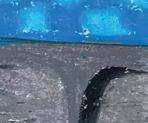



Last year, the club’s top eight players competed in the Inter-University Cup at the Cambridge Real Tennis Club, facing students from across the UK. Guganeshan Muralitharan came first, and Alex Goss-Pastor was runner-up in the handicap singles tournament — an impressive display from the club. The highlight of the season, though, came abroad. The team travelled to France, competing in Paris, Bordeaux, and Fontainebleau.










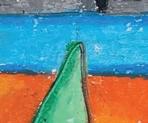







investigates the nicher corners of St Andrews sports
few competitive sports without a referee. According to Glover, this forces teams to be respectful of each other. “I think this ‘spirit of the game’ spills over into the rest of the sport to create a super fun atmosphere”, he said, also describing the sport as a very welcoming space for newcomers, with many of the current players having started the sport while at university.
Ultimate Frisbee isn’t just a place to meet friends and joke around — they are one of the most successful clubs at the university.
In recent years, both the men’s and women’s teams have consistently ranked among the top two in Scotland, with the women placing second in the UK on two occasions.
Glover credits part of this success to the number of American students on the team, as the sport is much more popular across the pond. Perhaps he was being modest, though, as a lot of effort goes into these achievements. The competitive teams train four times a week, and players are encouraged to go to the gym to hone their technique in their free time. While the development squad
is a fun and welcoming place to learn a new sport, being on the competitive squad requires a considerable commitment. Korfball, often shortened to Korf, is another niche sport in the seemingly endless list of sports societies at the university. Like Frisbee, both matches and socials are mixed, and there is an emphasis on fostering a warm, beginner-friendly atmosphere. This was what appealed to third-year student Elsa Davies, who had been looking to join a sports club for some time. She wanted to try a team sport which had a more friendly feel than the sports she had tried growing up, which led her to Korf.
This is only Davies’s first semester with the group, but so far she is thoroughly enjoying all the “weird rules” of the sport. When I asked her what exactly those rules are and what exactly Korf is, she struggled to answer, so I decided to find out for myself.
Last week, I turned up to a session and had a go at Korf, and I now understand why she struggled to describe it to me. Essentially, the court is split into two, and half of each



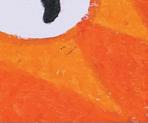
“The rabbit hole of unusual sports goes far deeper.”
team plays on each half. One team attacks and the other defends, and the attackers are aiming to throw the ball into a netball-esque basket, or Korf (meaning basket in Dutch). This Korf is three and a half metres in the air, and, however high that sounds, I promise it is double what you have in mind. With all my athletic prowess, I managed to score a total of zero goals. Mercifully, all Korf players, Elsa included, brandish the same encouraging fact every time you miss. “Don’t worry, only 20% of shots in international matches go in,” she cheered, as my shot hit a spectator. I may have been hopeless at Korfball, but the rabbit hole of unusual sports goes far deeper. Perhaps next time I’ll find out just how bad I am at Aikido, whatever on earth that is.
ELODIE COWAN Sport Writer
How tricky can golf actually be? I own a 7-iron. I’ve played the Balgove on numerous occasions. I can mimic my dad’s ‘no one’s watching kitchen swing’ perfectly. It was time to take on the big dogs and play the Balgove with none other than the men’s golf scholars: Michael Crowley, Sam West, and Winston Margaritis. How hard could it be?
The scholars, fresh off the back of the St Andrews Links Collegiate tournament and their recent trip to Sweden, made for quite the trio. Each brings a different motivation, accent, and academic pursuit to the team. The trio united by golf, separated by handicaps far superior to mine.
Sam West grew up in Portsmouth and first crossed the Atlantic to play collegiate golf at Miami University of Ohio, where he completed his undergraduate degree. Now studying for his Master’s in Finance and Economics at St Andrews, West represents the UK in the scholar team, highlighting home-grown role models such as Fleetwood and Rose during the round. I felt like West and I had a sort of Ryder Cupesque alliance — though I think he may have pulled the short straw with me there. What I could help him with, however, was the Rainbow Challenge at the Union, which he confessed he hadn’t yet completed. Maybe one for the next Sinners!
Michael Crowley grew up in Baltimore, just twenty minutes from Loyola University Maryland, where he spent five years competing for their Division 1 golf team. He is now pursuing an MSc in Entrepreneurship
at St Andrews. Athleticism runs in his family — both of Crowley’s sisters play Division 1 lacrosse in the US. If he can rip a lacrosse shot the way he sinks a putt, the men’s team might just have a new recruit.
Winston Margaritis began at Florida State University, transferred to Baylor, and later completed graduate studies at Belmont University in Nashville before making the move to Scotland. Now
clear the reality has lived up to the hype.
“It’s the best place in the world,” Margaritis told me, and Crowley added that it has “exceeded expectations.”
The scholars outlined the layout of the R&A Student Tour Series. They have already competed in Sweden and Ireland, with Crowley leading within the trio. The team will head to Spain and Portugal in February to complete the second half of the tour. If

studying International Business, Margaritis likes to unwind by playing tennis and reading — he even recited John McPhee’s opener on Arthur Ashe mid-round, somehow making it sound like a sermon.
All three confirmed that word of mouth influenced their move across the pond, with scholar alumni raving about their time in St Andrews. From the way they spoke about their experience so far, it’s
they finish inside the top 30 individually, they’ll qualify for the final in March, held here in St Andrews on the Jubilee Course. I’m sure they’ll be booking in another round with me mid-March to practice for that.
When it came time to play, their drives were mammoth: straight, long, and seemingly effortless. I tried not to look too shocked. By contrast, my shining moment came later: a short, four-foot
putt Crowley kindly let me take. Against all odds, it dropped. The celebration was instant and excessive — what could only be described as a victory leap of joy.
The scholars laughed, suggesting maybe they should start celebrating their own putts that way. West added that their Scot coach might not be best pleased if that became part of their practice. Personally, I’m rooting for the victory leap.
As we ambled towards the final holes, talk turned to players who shaped their games. Margaritis nodded to Tiger Woods, with his generation watching Woods and aspiring to swing like him. “The Federer of golf,” Maragaritis said, with Woods and Federer alike having beautiful and powerful motions — and huge successes — in their respective sports. Between shots, the scholars floated ideas about running student golf clinics — to introduce beginners to the game and share a taste of the sport that’s taken them across the globe. One thing’s for sure: if they have the patience to lug me around the Balgove, they’ll make excellent coaches.
Before we parted ways, Crowley handed me the St Andrews-marked golf ball I’d been using, insisting I keep it as a souvenir. A small gesture, but one that summed up the afternoon perfectly — the kind, light-hearted spirit and generosity of three very skilled athletes.
As the sun set on the Balgove and I lined up my final putt, I realised golf isn’t tricky — it’s impossible. But at least I had good company while finding that out. And at least the trio will have someone to show them the ropes of the Rainbow next Wednesday night.
Photo by Elodie Cowan
GREGOR MURRAY Sport Writer
A hangover is not the only thing on the agenda on 1 November. The end of ‘Hallow-week’ marks the start of Movember — a month dedicated to raising money and awareness for all things surrounding men’s health.
Growing (or attempting to grow) a moustache is the primary feature of the month for many men, in a stunt to spread awareness for male health issues such as testicular and prostate cancer, and organisations that tackle mental health and suicide prevention.
‘Mo-ing’ is not the only way of spreading awareness for such an important issue; many take on fitness challenges throughout the month to fundraise for the campaign. From participating in daily runs or sponsored
walks to braving the Baltic temperatures of the North Sea on Castle Sands, students across St Andrews engage in all kinds of fundraising activities throughout the month.
Last year, across university-affiliated sports clubs and independent fundraisers, the St Andrews Movember campaign raised a staggering £40,148, with all proceeds going directly to men’s health projects and charities. This year, the committee is aiming even higher with a target of £45,000.
University-affiliated sports clubs organise events and competitions to help raise money. The football club co-presidents have participated in daily cold plunges for the past two Novembers, and an annual sevenaside tournament is run by the hockey club.
Over the past years, many other clubs, including tennis, golf, snow sports, cricket, cross-country, and rugby, have run a wide
range of fundraisers, from bake sales and 24hour sport-a-thons to touch tournaments. There’s something for everyone! Keep your eyes peeled for this year’s events run by the Movember committee. Key dates include a return of the annual 24-hour relay, where participants run or walk a five-kilometre route over an allocated half-hour slot from noon to noon.
Notably, also, on 15 November, the 601 will be transformed into a mini Ally Pally with the annual ‘Mo-Darts’ taking place. A highlight of the Movember calendar, competitors will dress in costume for an action-packed night. Everyone is welcome and encouraged to take part in these events to raise awareness for a good cause.
Committee president, Paddy McLaughlin, is full of praise for the work of his committee and the events that will run
over the Movember campaign. “It’s a great way to bring the student body together to raise money for a pressing issue that isn’t spoken about enough.” The fun spirit of many of the events reflects the main ideal of Movember, humorously breaking the stigma surrounding an often-overlooked issue: “Making it a comfortable environment encourages people to speak up.”
Sport challenges throughout the month are accessible to everyone and everyone, from throwing a frisbee on West Sands to sponsored climbs at the sports centre. The ‘Mo-bros’ are calling on you to put down your razor and put on your trainers this month!

ISOBEL LISHER Sport Writer
When you think of shinty, you might picture a cold Scottish morning — the crash of sticks (or caman) on muddy turf, a game recognised by few outside the Highlands. Often compared to field hockey but known as a more physical alternative, shinty is a true spectator sport. I spoke to club president Niamh Hague to find out why it’s thriving at St Andrews — and why it continues to capture the imagination of so many.
“Shinty is a traditional Scottish sport,” Hague explains. “It’s a bit like hockey but a lot more aggressive, as it is a full-contact sport.” This ancient stick-andball game has been played for almost 2,000 years, though the modern version was formalised in 1893 with the foundation of the Camanachd Association.
anyone looking to try something new at university.
“Across the whole club, only one of our players had played shinty before — and he’s the men’s captain,” Hague adds, highlighting the team’s inexperience. “The rest of the team all started playing since they joined the university.” Because of this, the club’s coaching is geared towards improving beginners: “Their confidence is built to the point where they can play matches against seasoned players.”
Off the pitch, the spirit of shinty is reflected by its inclusive and fun socials. As women’s social secretary, Hague orchestrates Shinty’s famous sports nights. “We run themed socials every Wednesday, with the men going to Aikman’s and the women going to The Rule, ending with mixed afters.” And really, who would not want an excuse to hit Aikman’s or The Rule? The socials aren’t just for players either; as Niamh recalls, “We have lots of social members who don’t play the sport but attend the socials on a weekly basis — something I don’t think is very common in any of the other sports clubs.” Perhaps biased as a social host, she still rightly highlights, “I think that speaks to how much fun our socials are.” A theory I may have to test next Wednesday (purely for investigative reasons, of course).

She also attributes some of the town’s more popular sports to shinty: “Golf, hockey, and ice hockey all come from shinty, so even though it is quite a niche sport, more people have the skills for it than you might think.” If trying a sport you already have the skills for doesn’t appeal, then what will?
Thanks to St Andrews’ diverse student body, the Highland stereotype of shinty has been truly challenged here. It’s no longer a local curiosity but a global team effort, reflecting the sport’s evolution from niche pastime to international game.
“Our team is quite unique, as we have players from all across the world,” Hague says. “It’s really nice to see the sport reaching a wider audience.” It’s not that Shinty has been taken over by newcomers who don’t respect its heritage — rather, Scottish players take pride in seeing their national sport embraced by people from all backgrounds.
“I had actually never heard of the sport before I came to university,” Hague explains. “I was roped into going along to the shinty give-it-a-go in Freshers’ Week for a laugh, but I ended up preferring it to hockey, so I never really turned back.” The club’s welcoming and easygoing approach makes it the perfect place for
Many students involved in university sport are familiar with BUCS as the main competition, but because shinty is played solely in Scotland, it has its own league among Scottish universities. The team travels the length of the country for matches with plenty of memorable road trips. “Away games are my favourite thing about the club,” she recalls. “Spending days travelling and playing with my team has allowed me to make some of my closest friends at university.”
Hague’s experience is a perfect example of the personal growth the sport fosters. From a shy first year to club president in her third year, she reflected on the role Shinty has played in her university experience. “Probably the standout moment for me was running my first social as president,” she says. “It went so well, and I remember feeling so proud of my own personal growth.”
The sport’s balance of fierce competition and friendly community creates a space for students to thrive. Shinty is a sport undoubtedly on the rise, even in a golf-obsessed town like St Andrews. With such a close-knit and cross-year community, it’s no surprise that interest is growing. “I’ve noticed that the captains have been putting a lot of effort into coaching skills from scratch,” Hague says. “That might mean people feel more inclined to stick around.”
This proudly Scottish sport is enjoying a comeback in St Andrews. With more members joining every year and enthusiasm only growing, it’s safe to say that Shinty is clawing its way back onto the map — one caman at a time.
IMage ProVided by UStA Shinty
BEN BAGLEY Sport Editor
First of all, I’d like to hold my hands up and apologise for a mistake in last week’s league table: Botswana Meat Commission (BMC) is actually on ten points, not the nine advertised online. Maths has never been my strongest suit. That said, these are, in the words of Mikel Arteta, “not my fogging standards.”
With a two-week league hiatus, it feels like a good moment to take stock and look ahead to the business end of the season. Beavers and BMC remain the only undefeated sides in Division 1, with Beavers on top on goal difference. Only one point separates them from third-place Strokers, however, so they can’t afford to take their respective feet off the gas.
“I think with the talent in our squad this year, we’re in a great position to push for the league title,” Strokers Captain Chris Black, said. Their centre forward, James Taylor, has already bagged ten goals this season, and their squad depth is impressive. “Hani Saf, our sole freshers recruit, is quite possibly the most talented player to pull on the Strokers shirt.”
Spartans are also in with a decent shout of a top-two finish, sitting only three points adrift of the frontrunners. There’s an outside chance for Paqueta Crisps if they can build momentum in the run-in, but it looks like a season of mid-table mediocrity for a side that was hotly tipped for success back in September.
Butts Wynderers, Sheffield Tuesday, and Bolton Fondlers are locked in a gruelling relegation dogfigh with Tuesday and Fondlers yet to register a win. They need to pick up the pace if they’re to have any chance of survival.
“We’re underperforming and a long way off performances last season,” Sheffield Tuesday’s Freddie Coughlin highlighted. Wholesale personnel changes — including the loss of last season’s captain, Ludo ‘Knatchballer’ Knatchbull — may be to blame. “I have no doubt we’ll stay up,” Coughlin remains positive. “To the fans, please stick with us, the results will come.”
DLL are sitting pretty at the top of Division 2 and are firm favourites for promotion. Real Sosobad, BPM FC and BLFC are all still in the mix for the second promotion spot and a place in the promised land next season.
This Sunday sees crucial games at both ends of Division 1. Strokers face BMC in a clash of the titans before Bolton Fondlers go to Sheffield Tuesday in a relegation six-pointer.
Keep up-to-date with the constant, dizzying, twentyfour-hour, yearlong, endless football on The Saint website.
Weekend Fixtures (Div. 1)
Beavers vs. Butts Wynderers
Paqueta Crisps vs. Spartans
Sheffield Tuesday vs. Bolton Fondlers
Strokers vs. Botswana
Weekend Fixtures (Div. 2)
DLL vs. St Andrews Sundays Real Sosobad vs. FC BPM
Roundball FC vs. BLFC